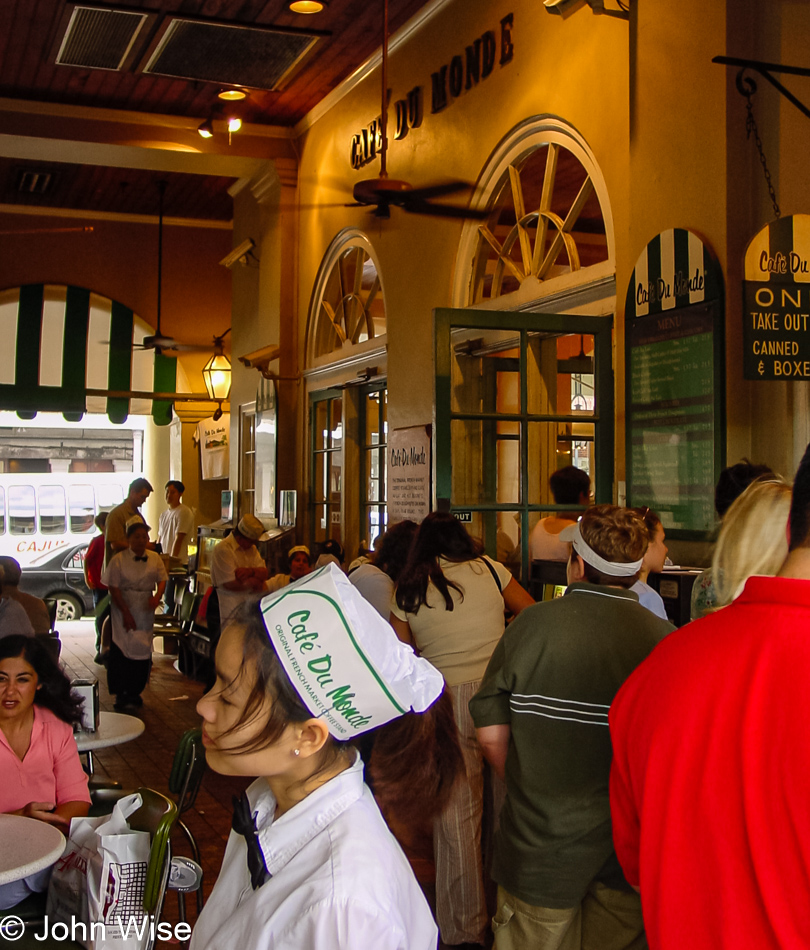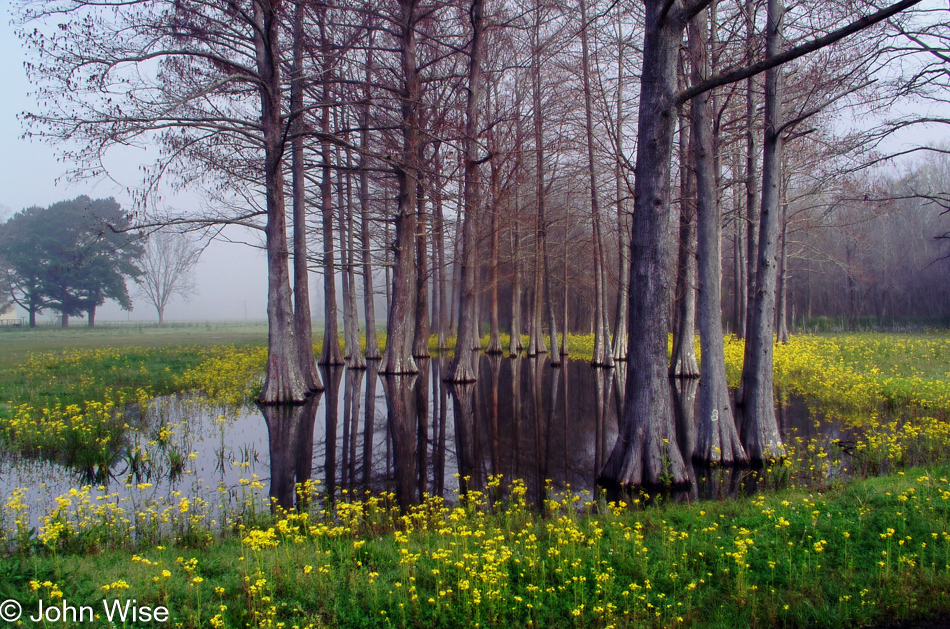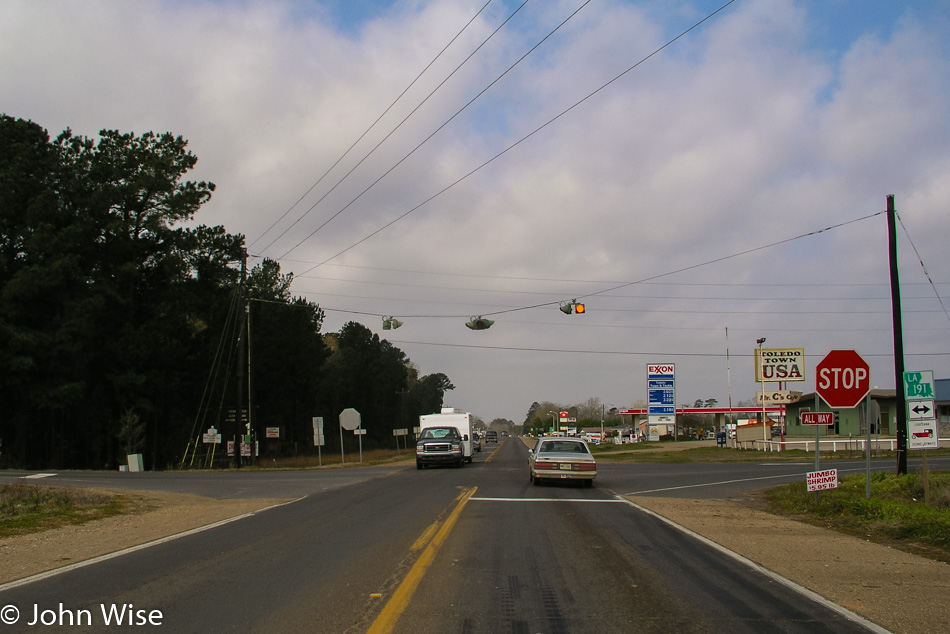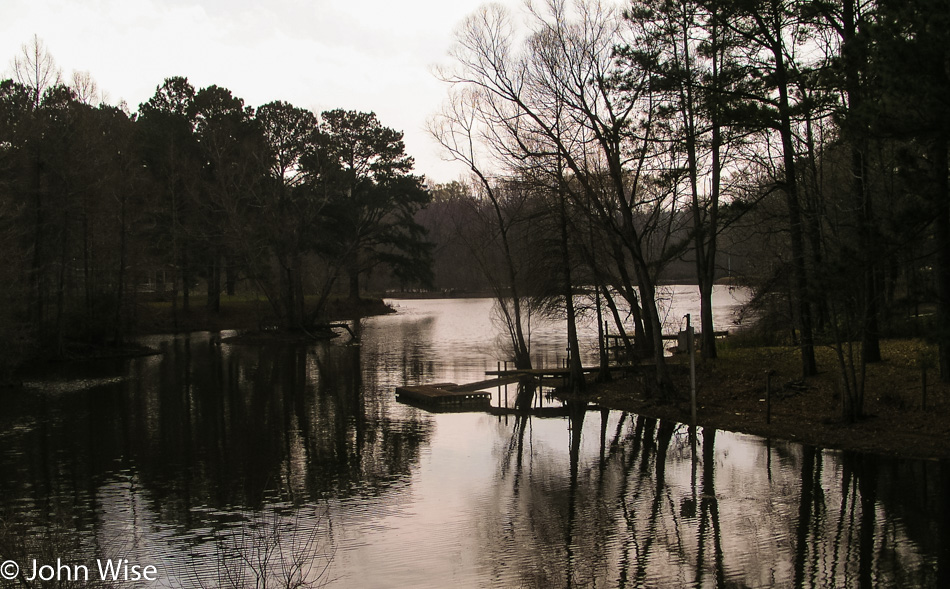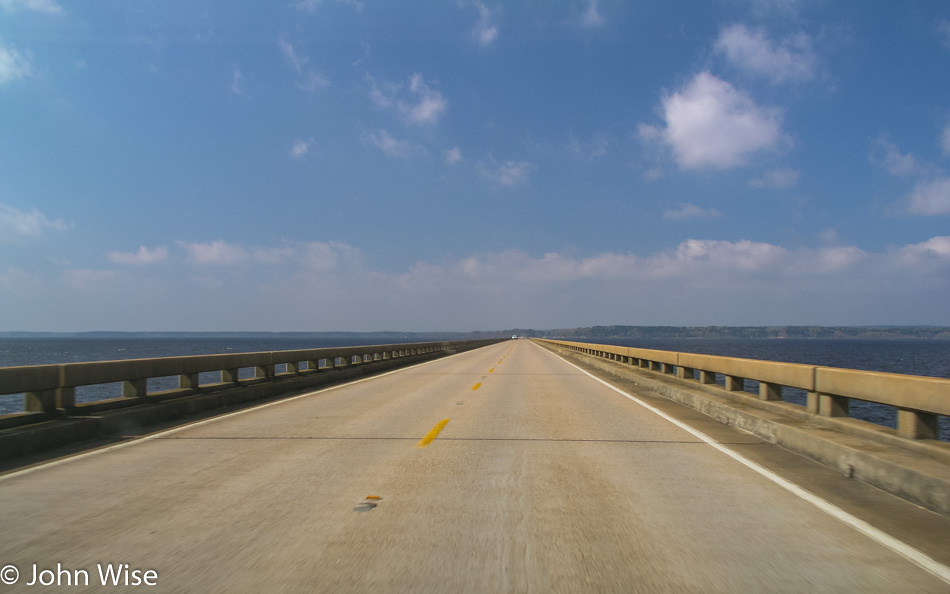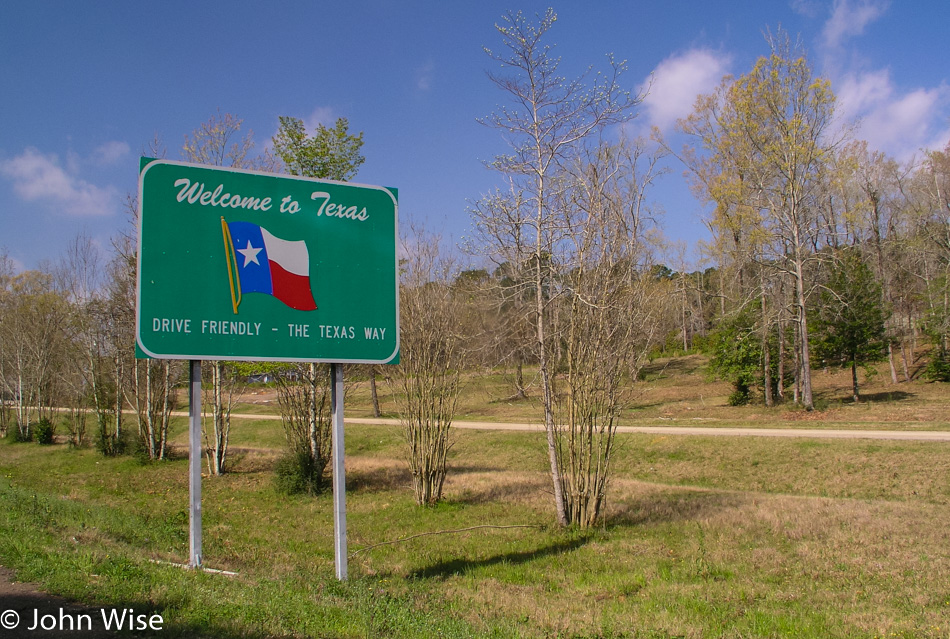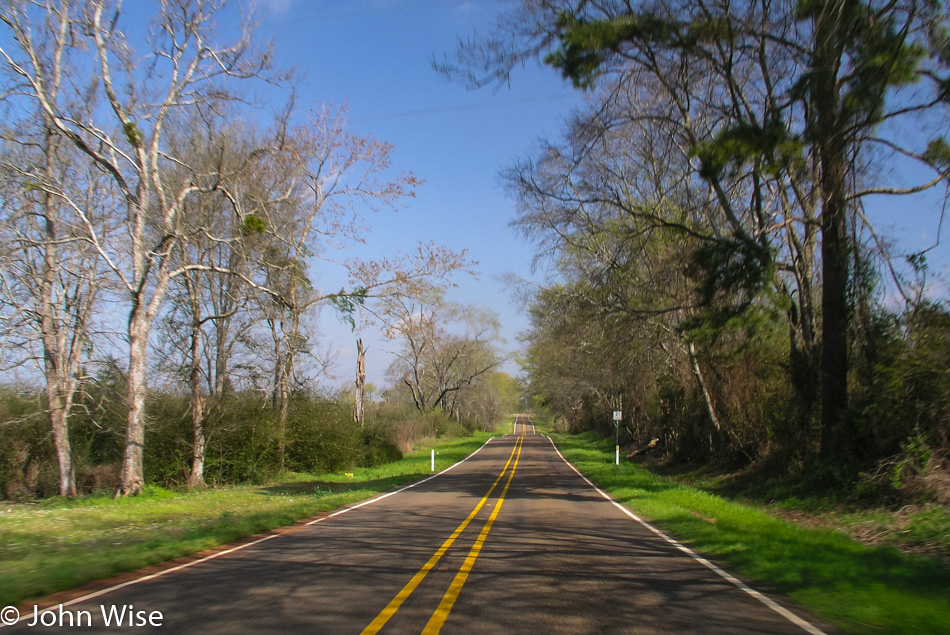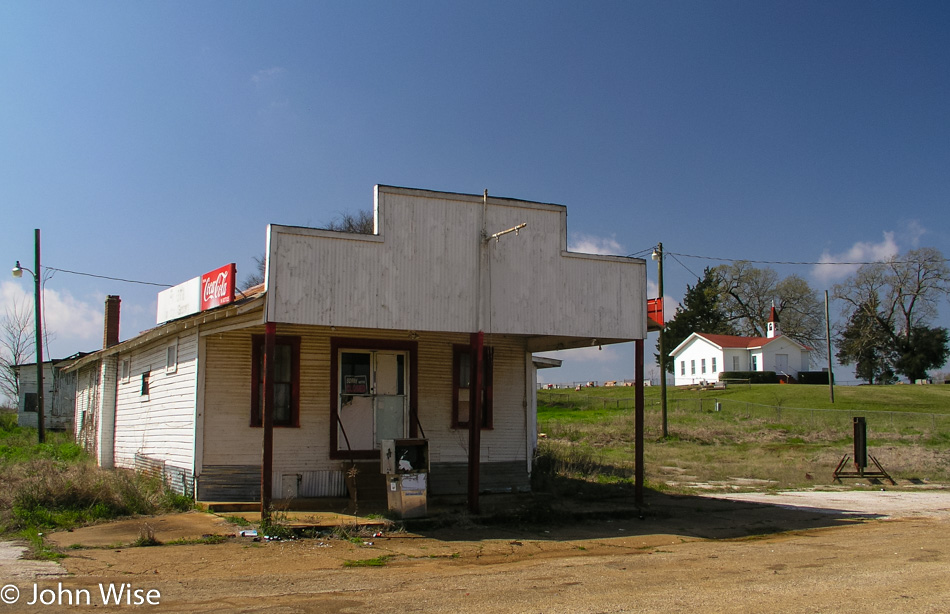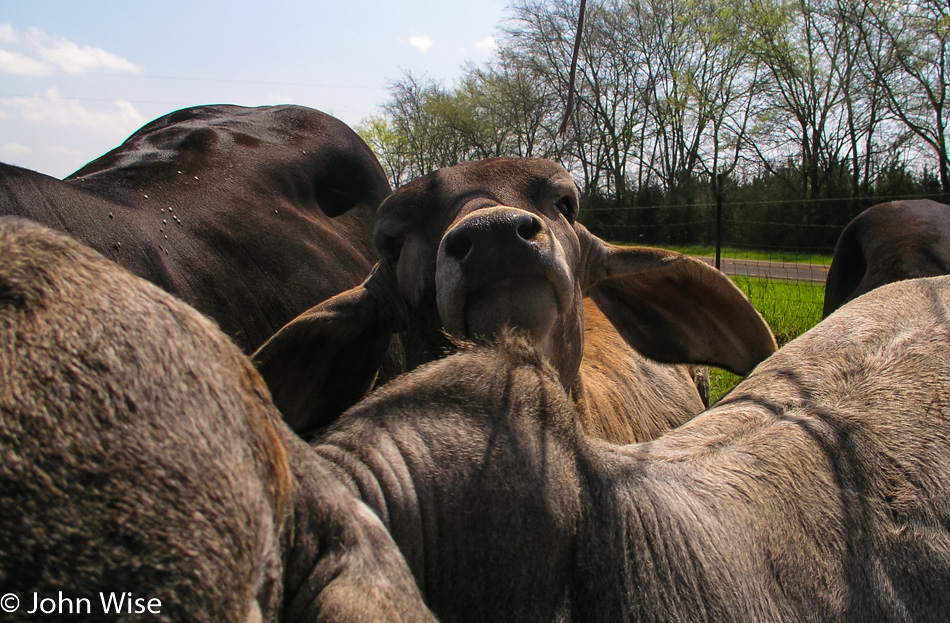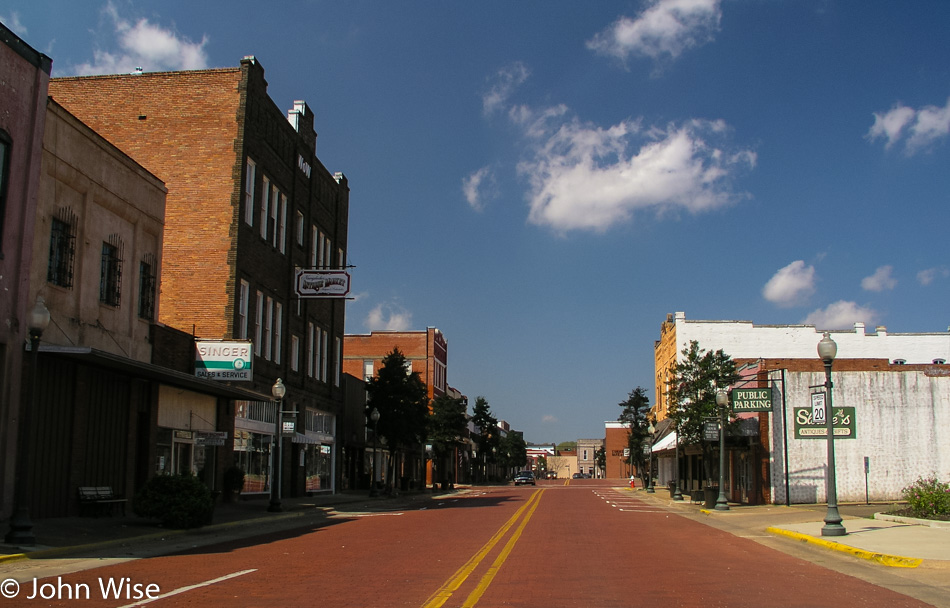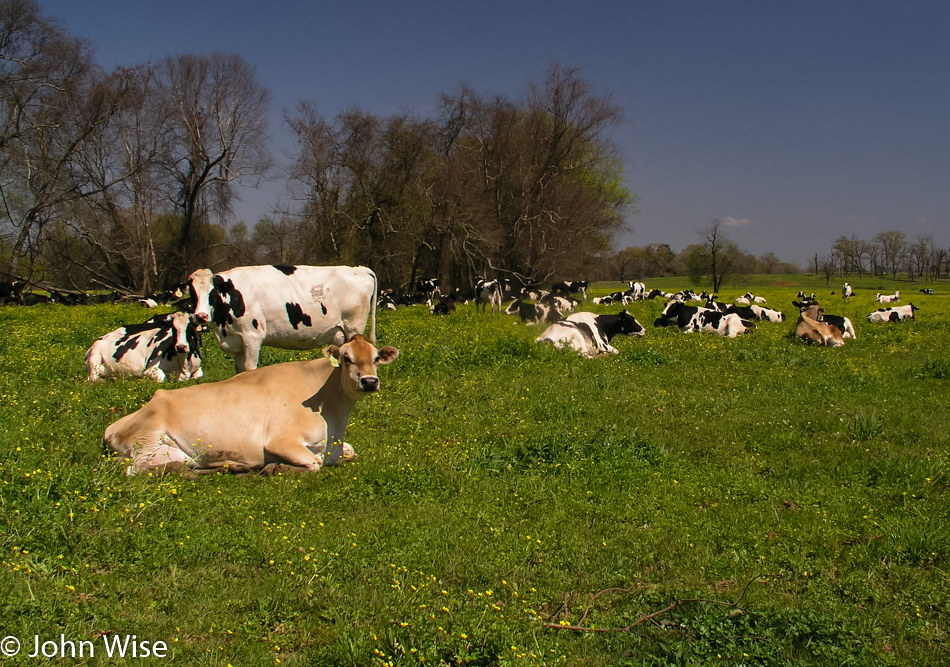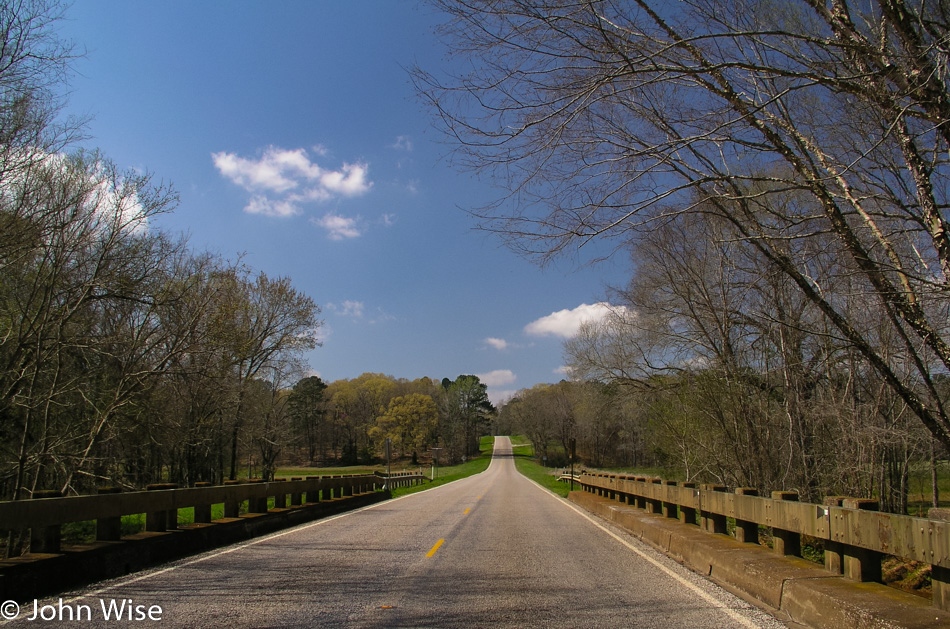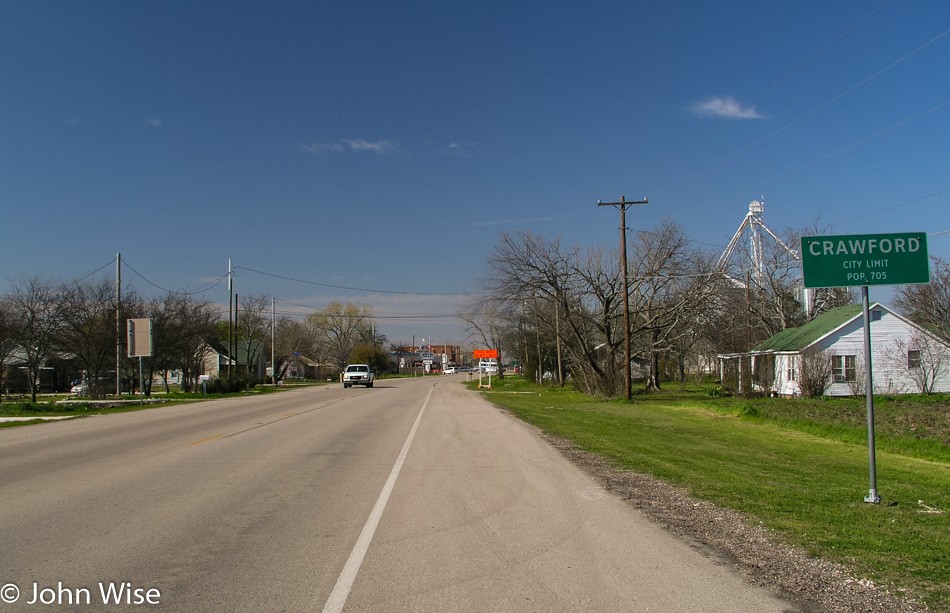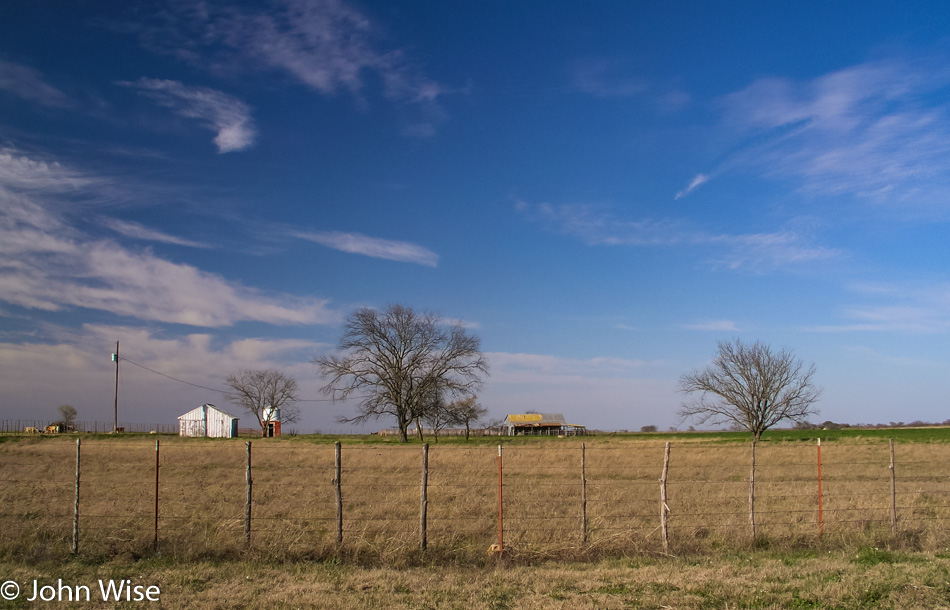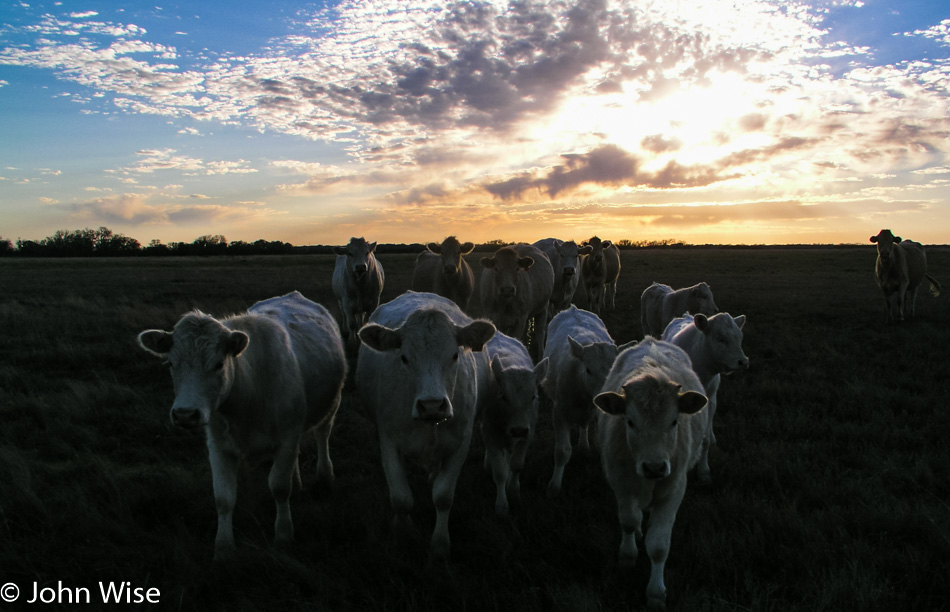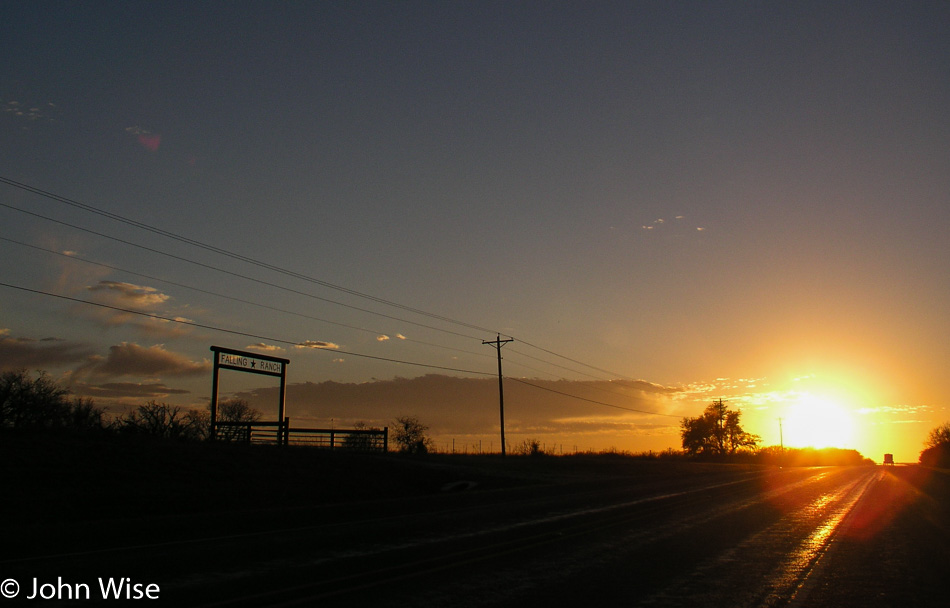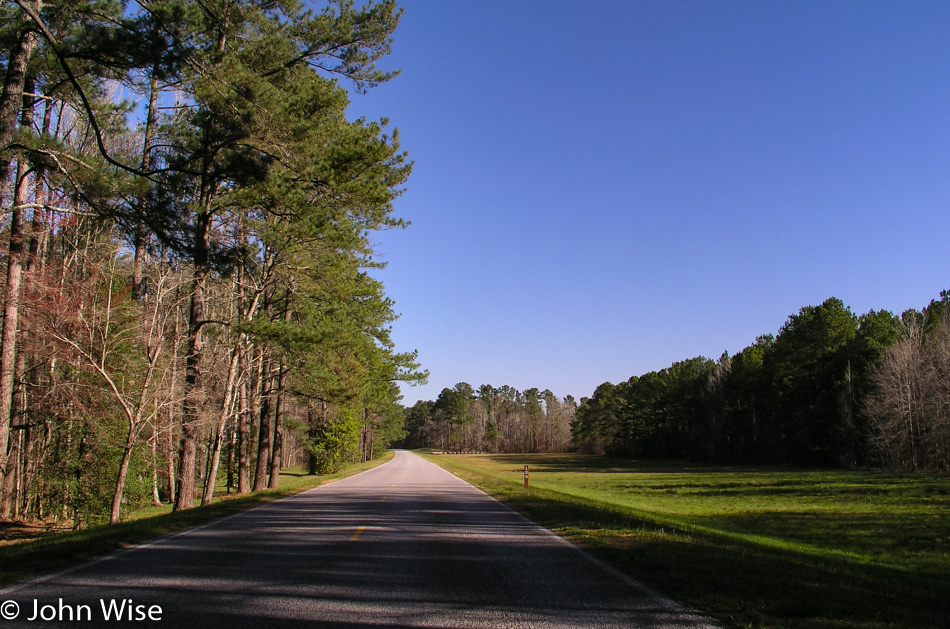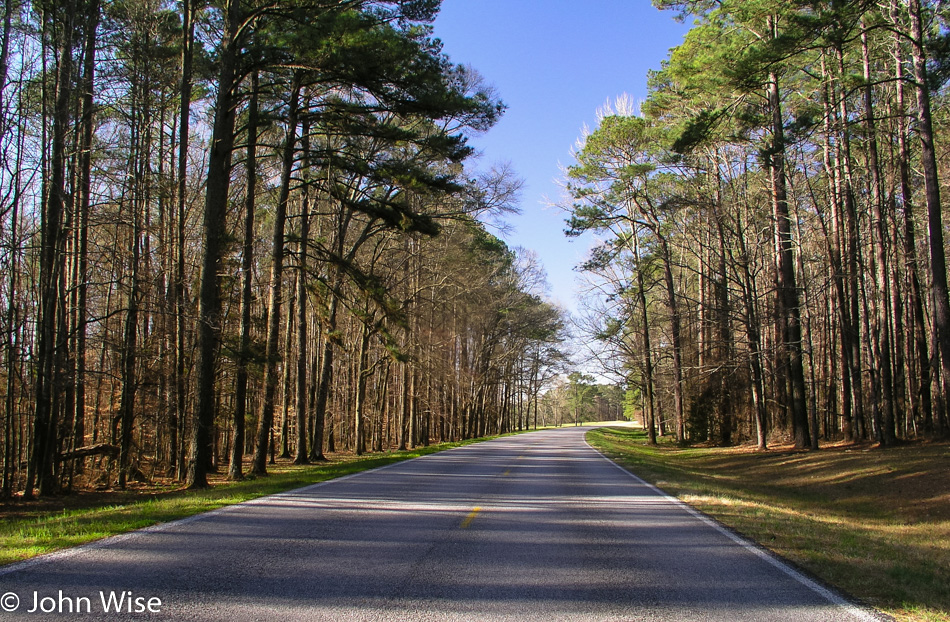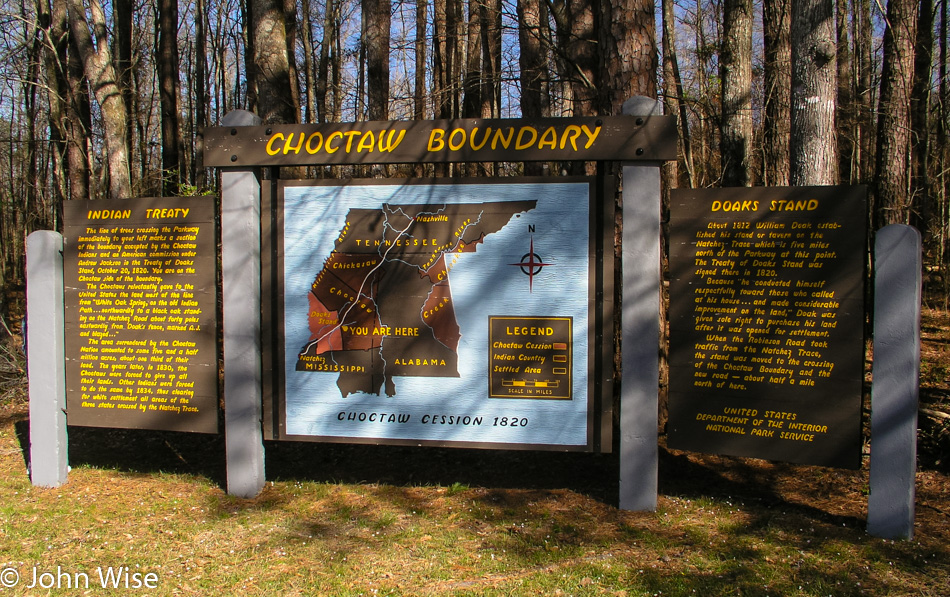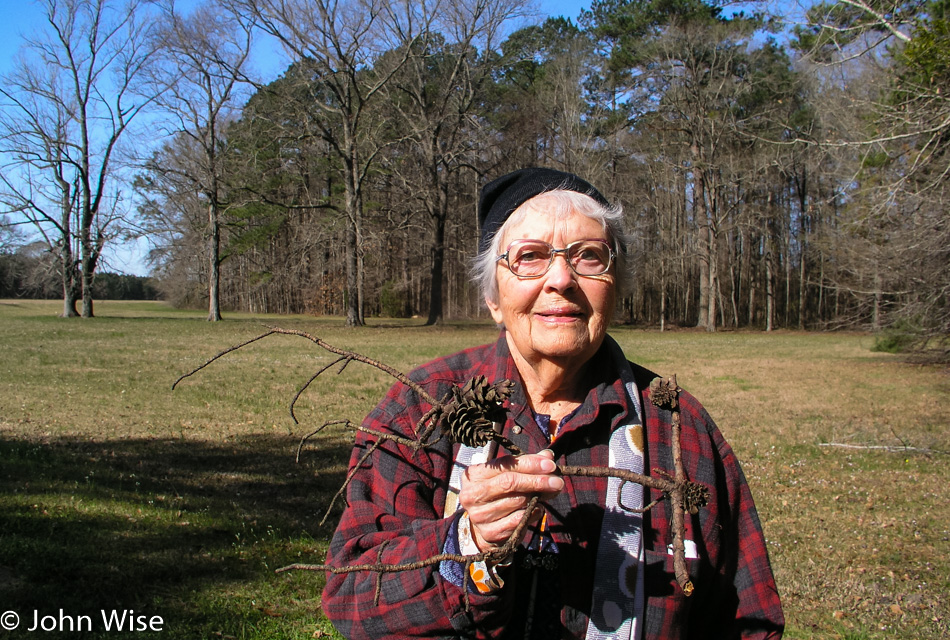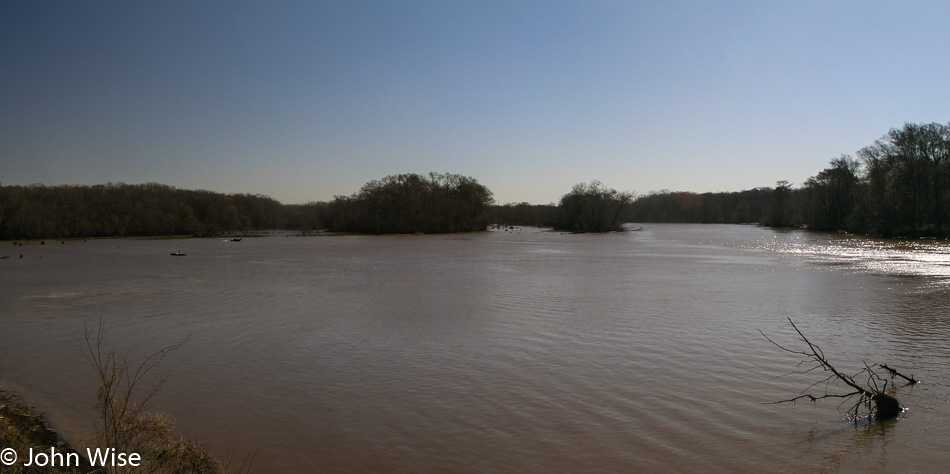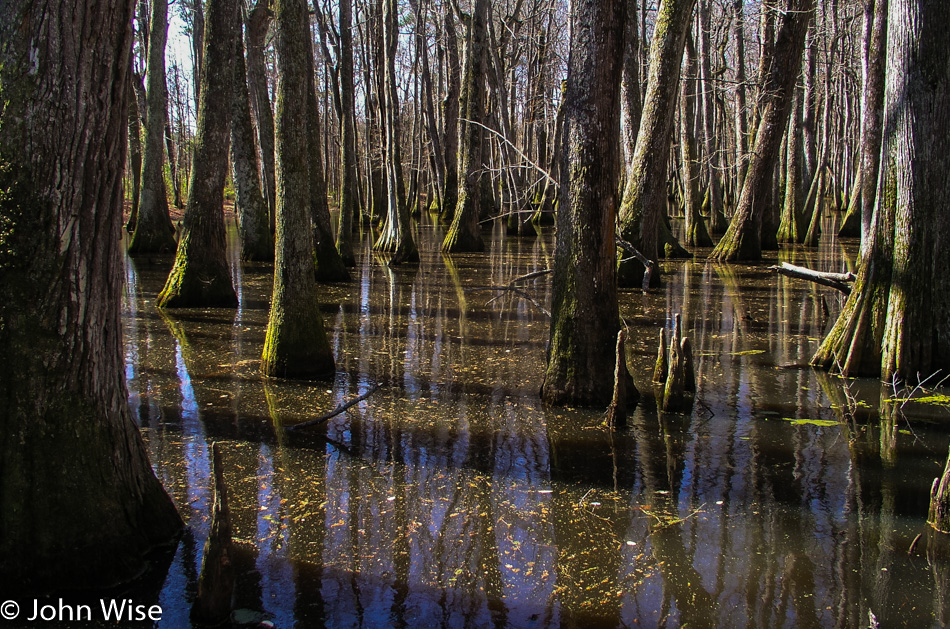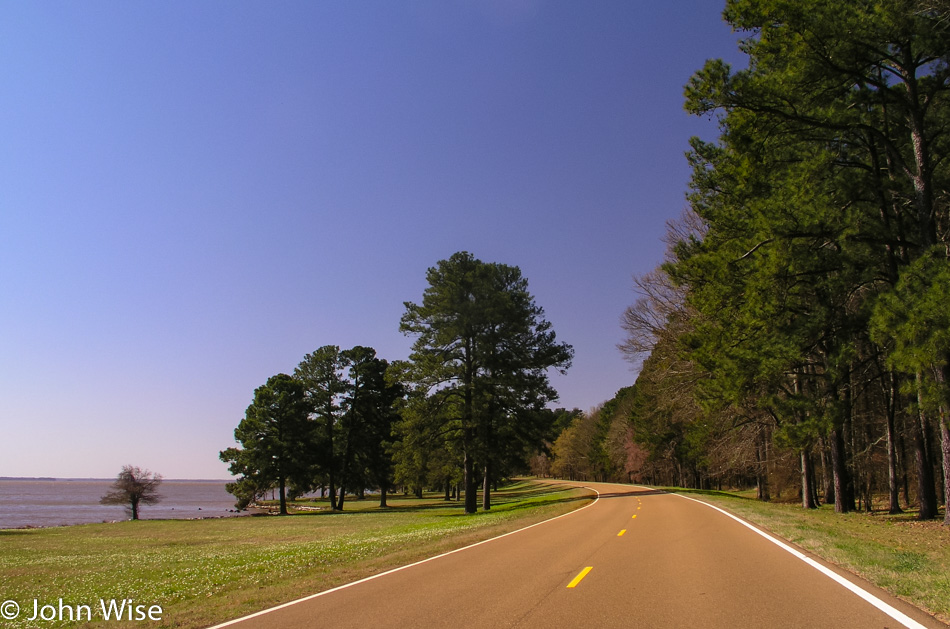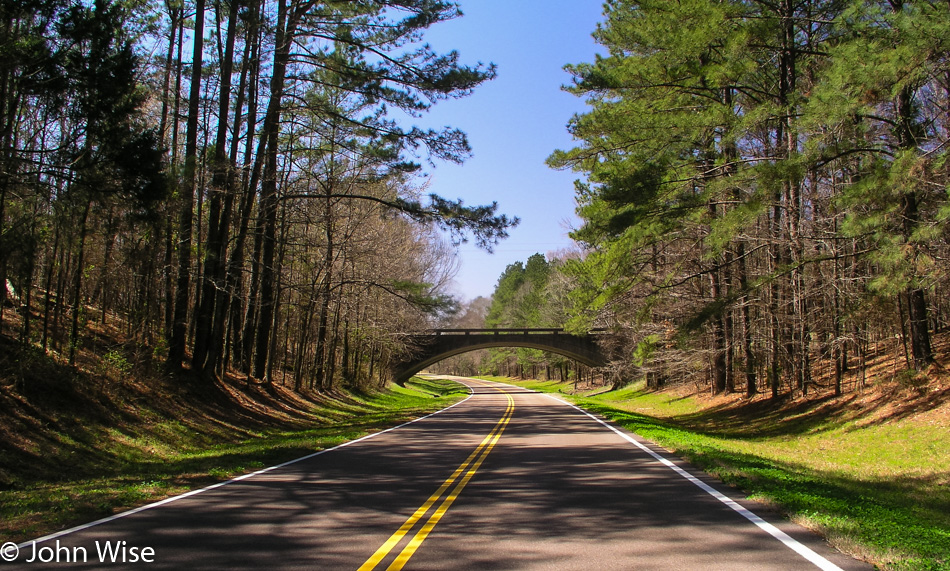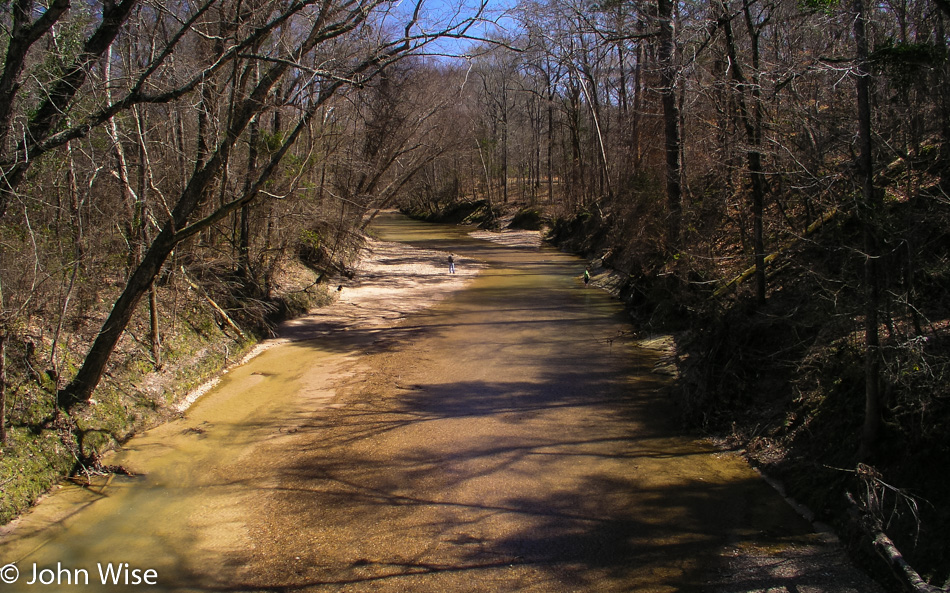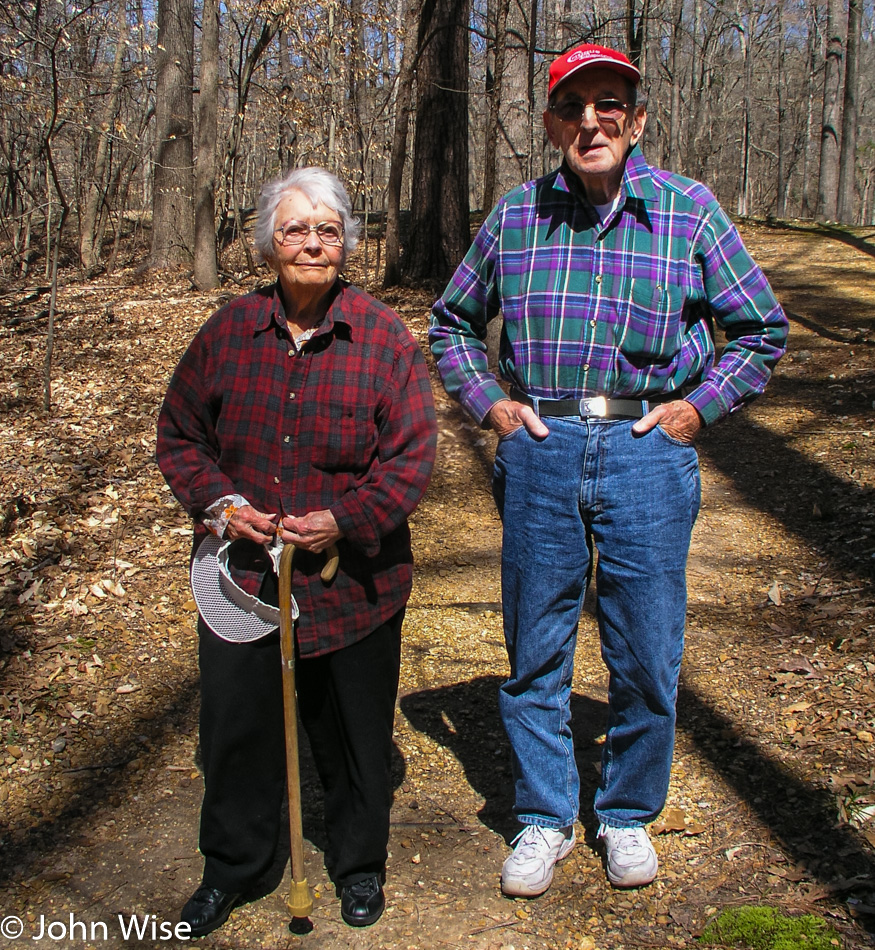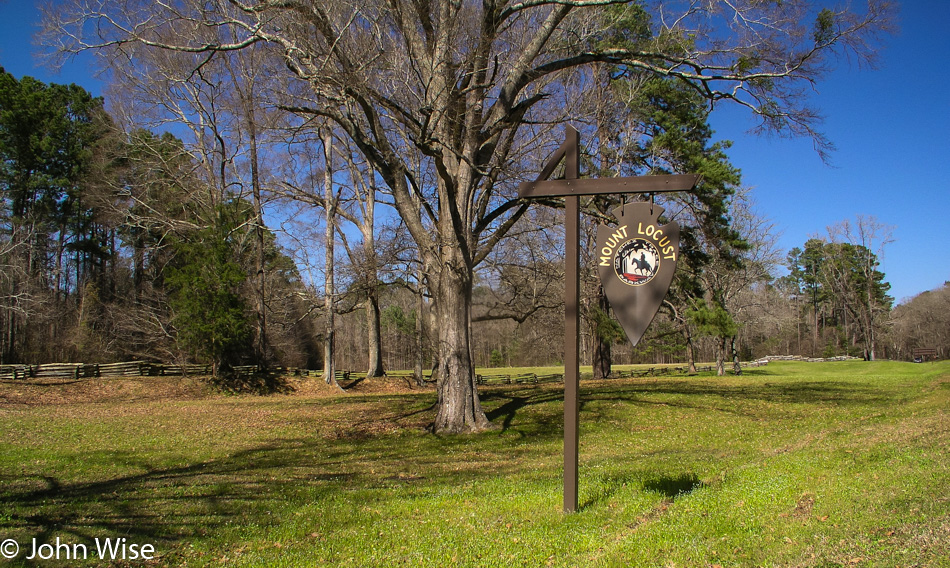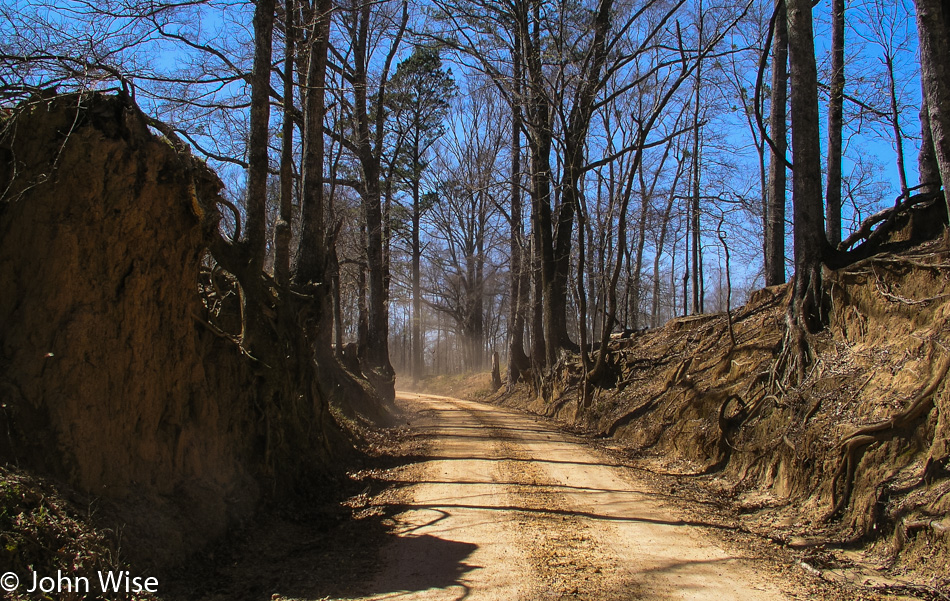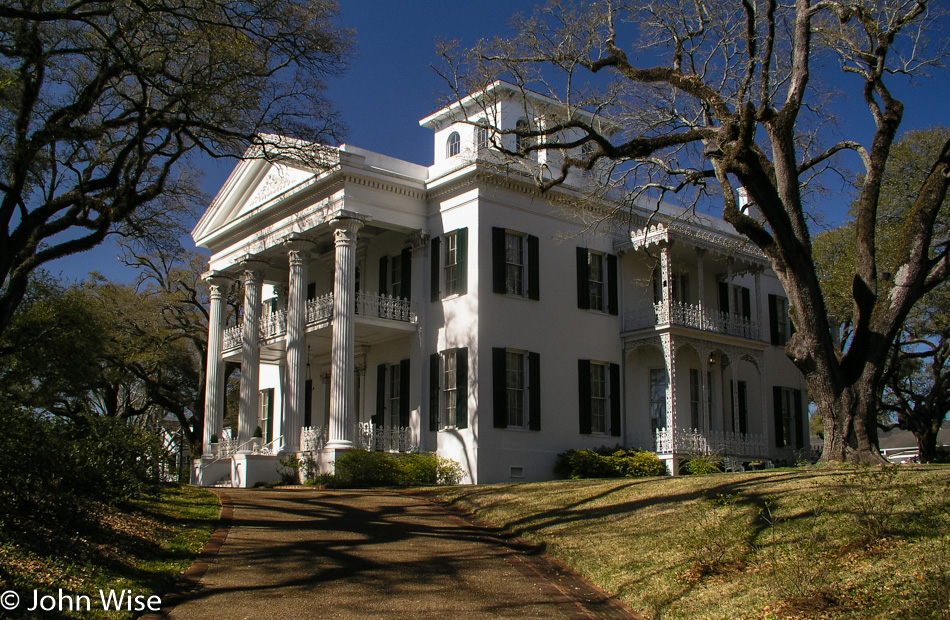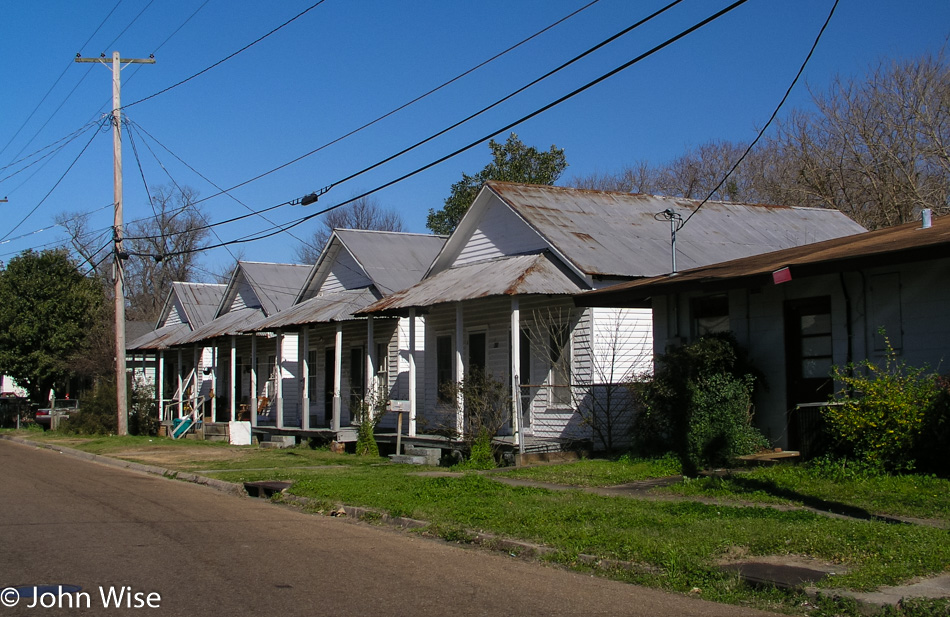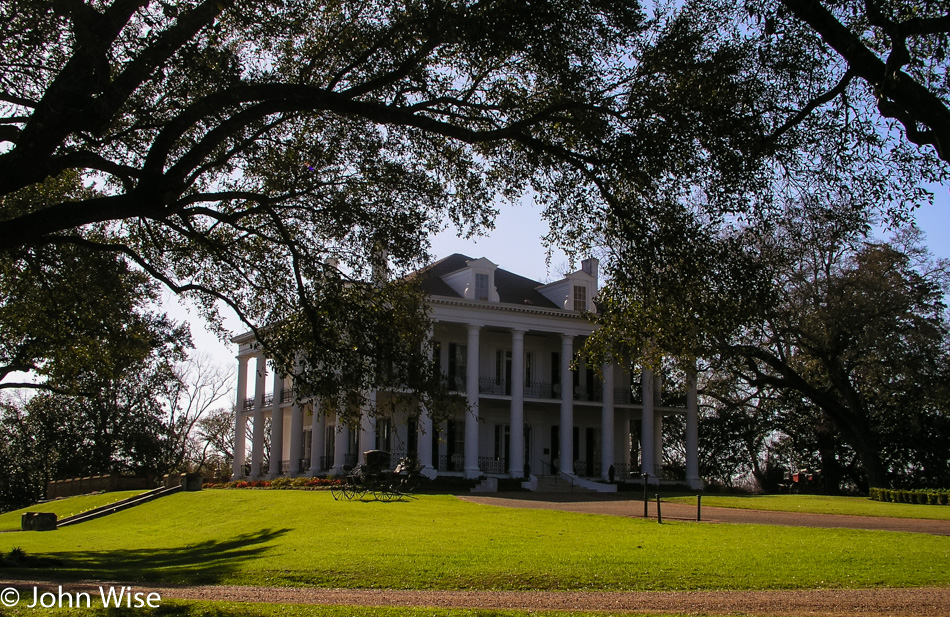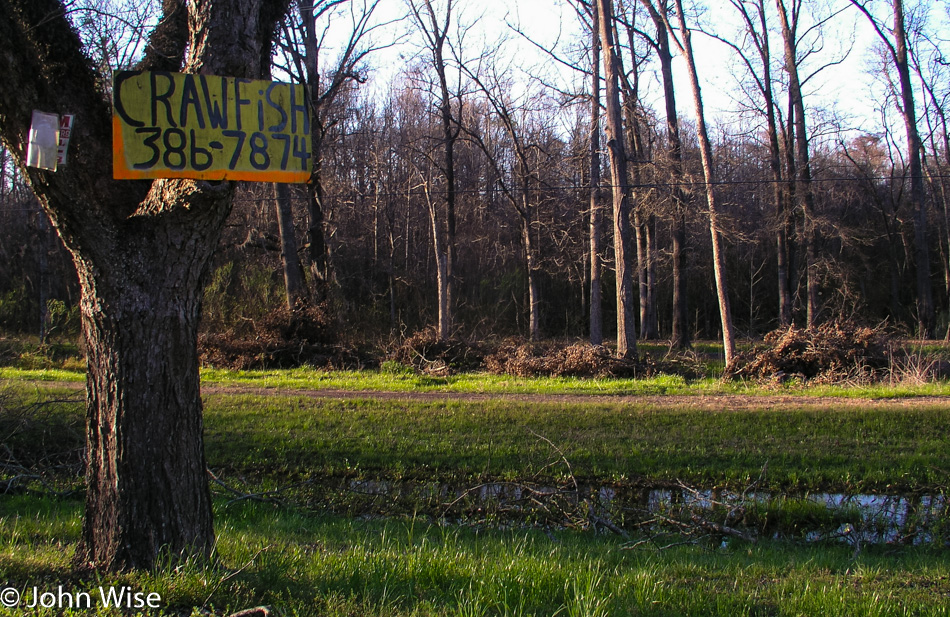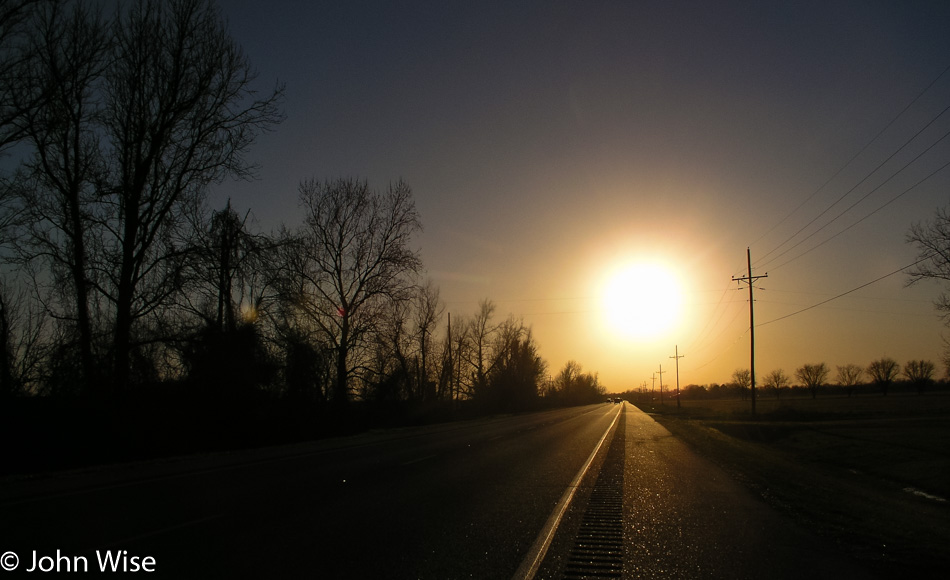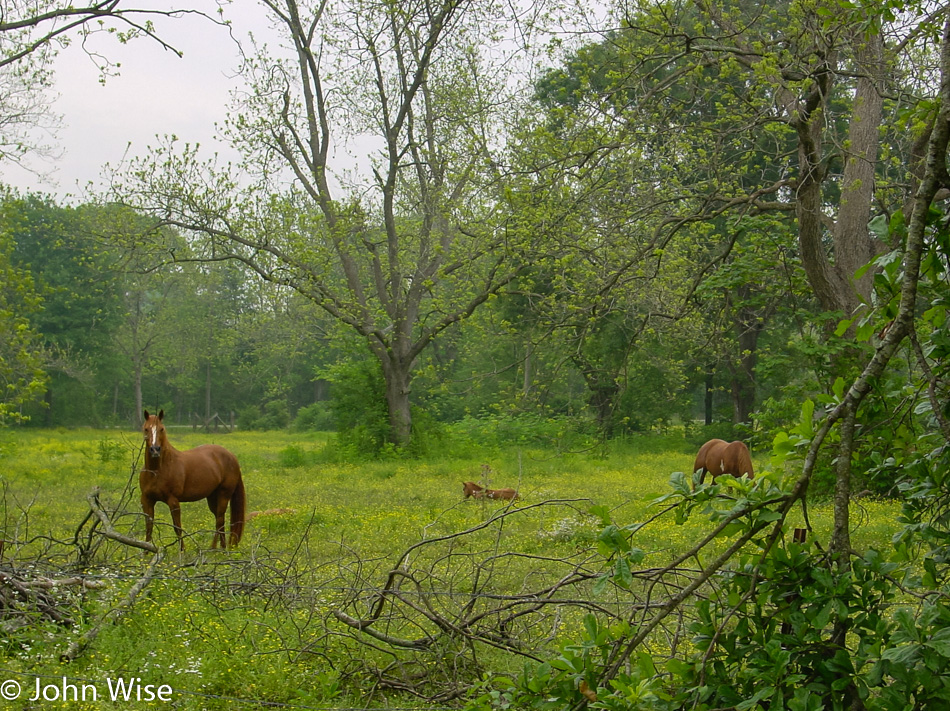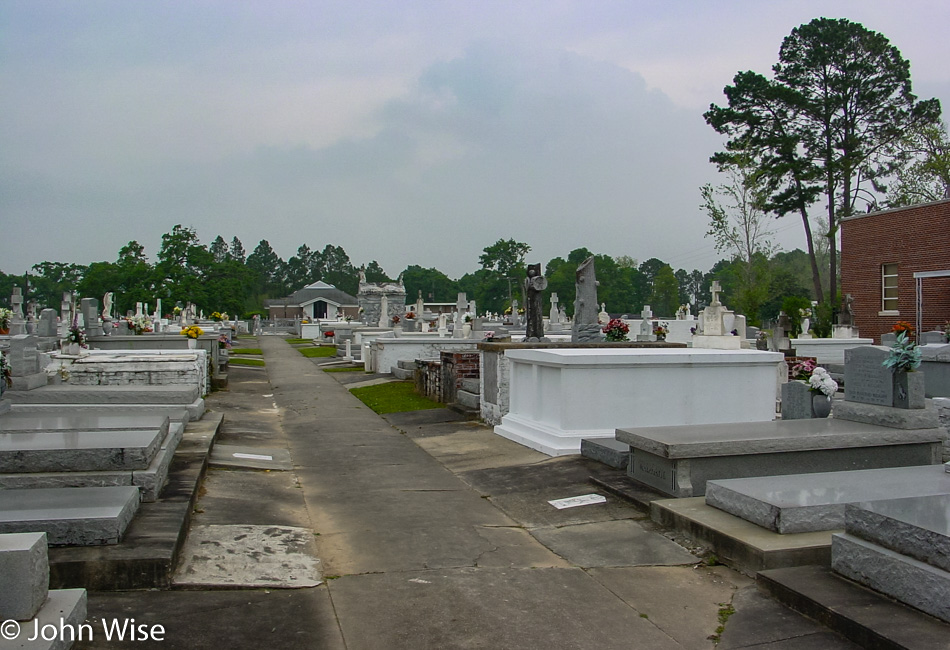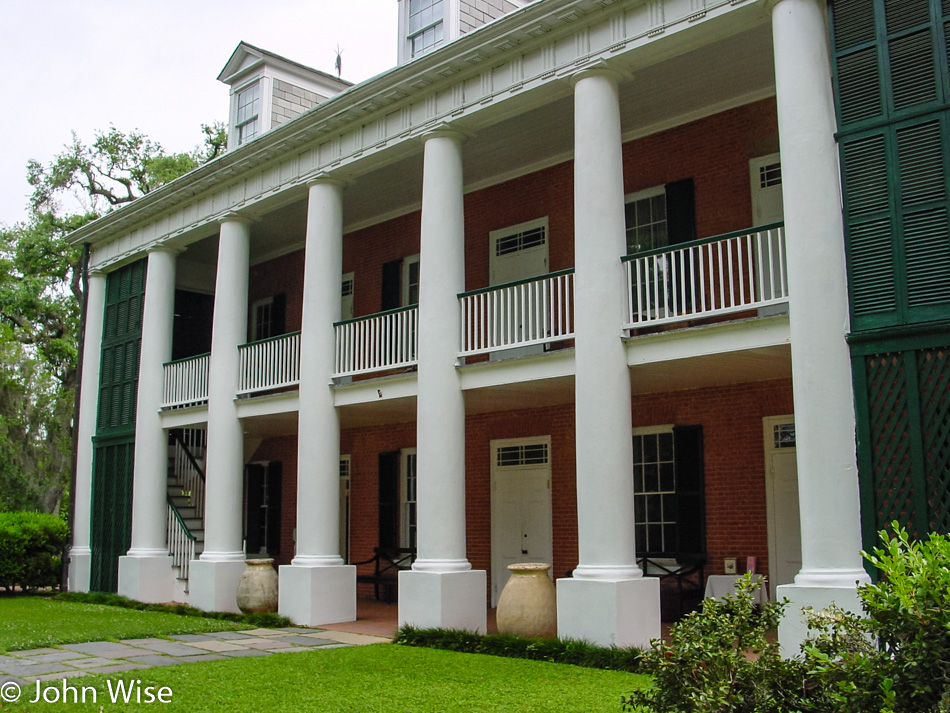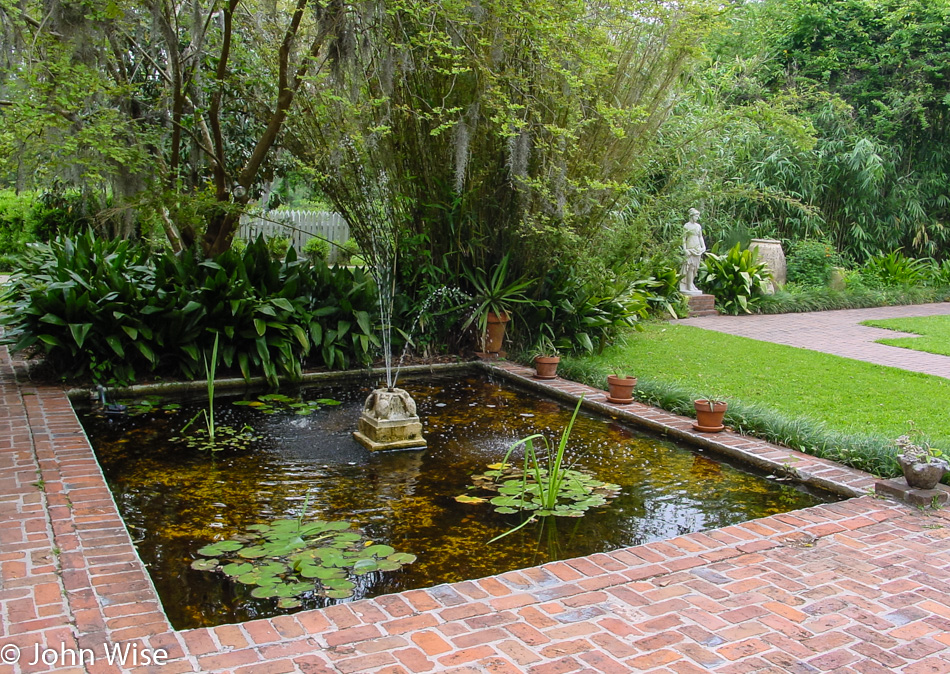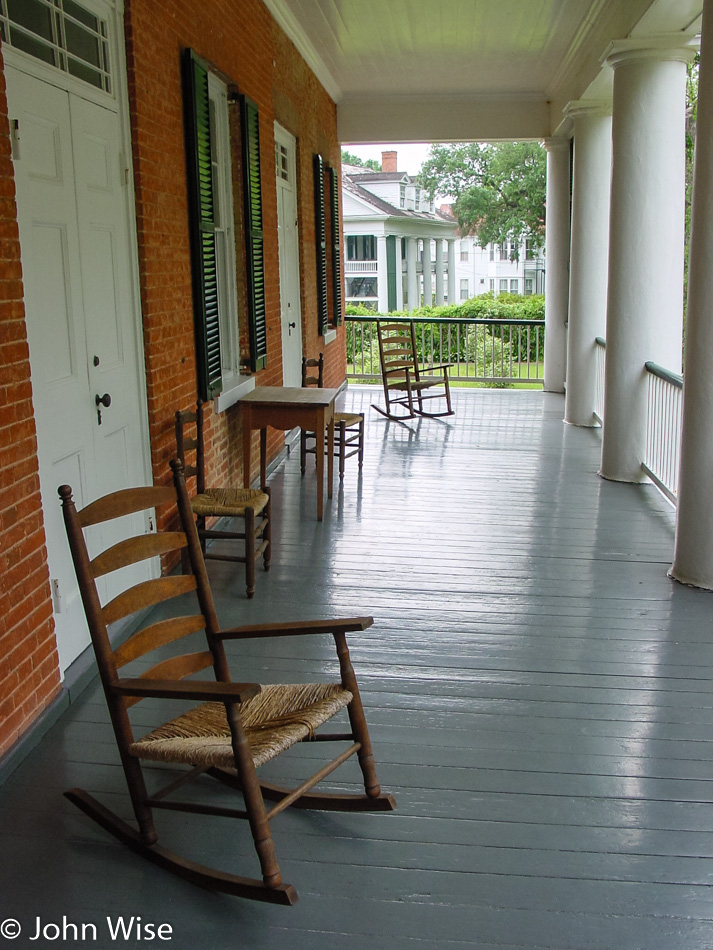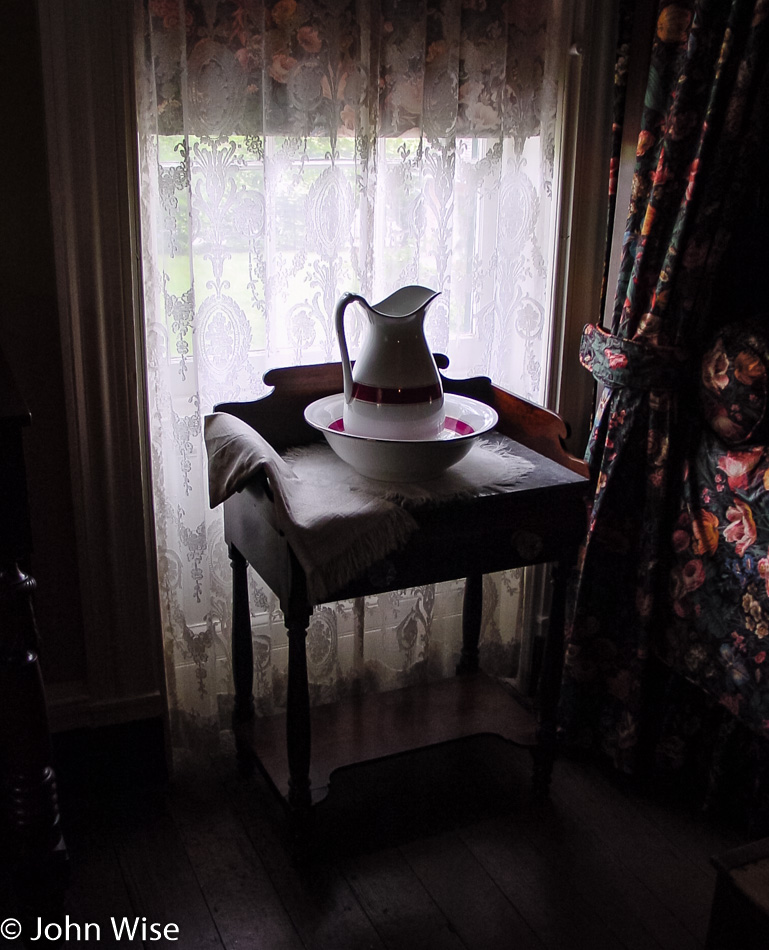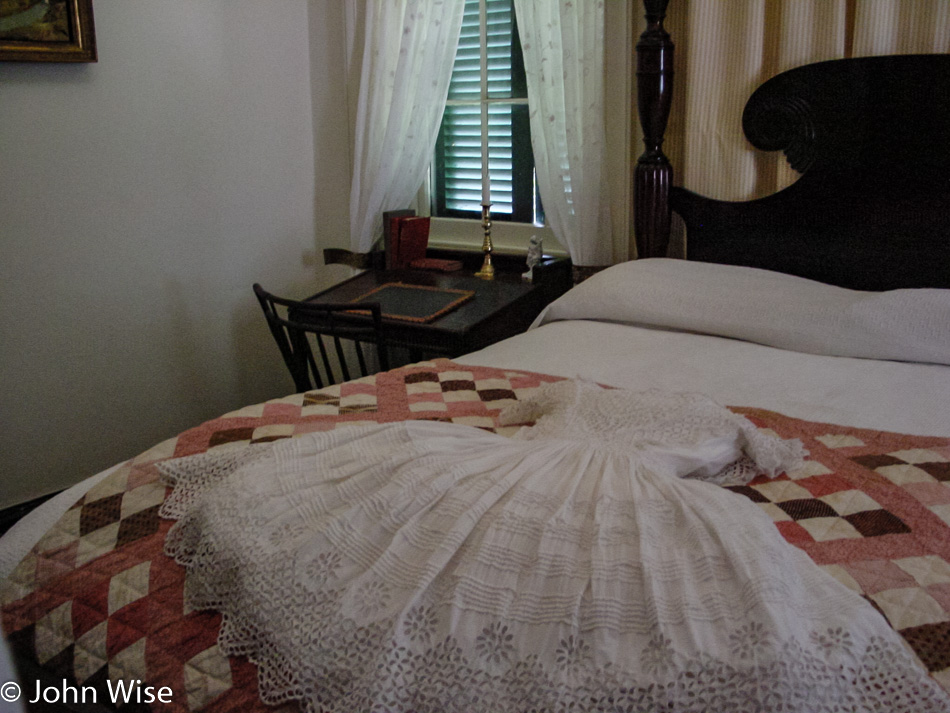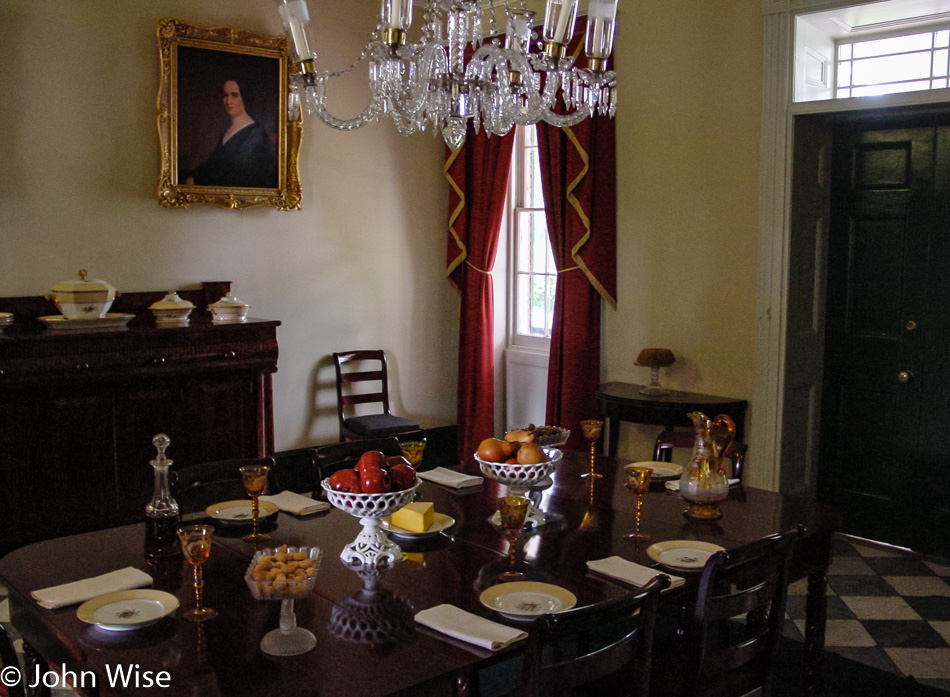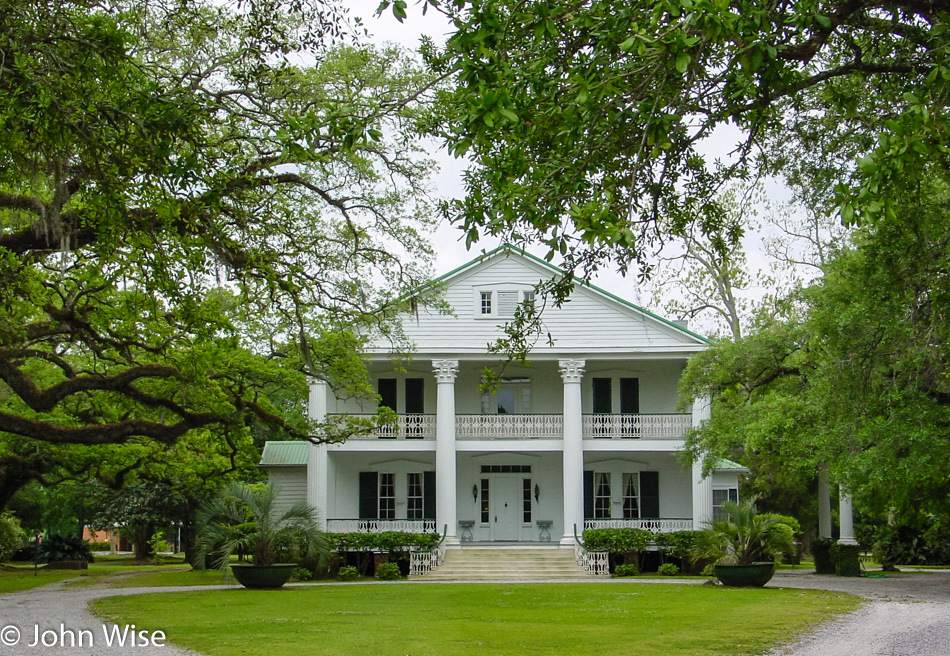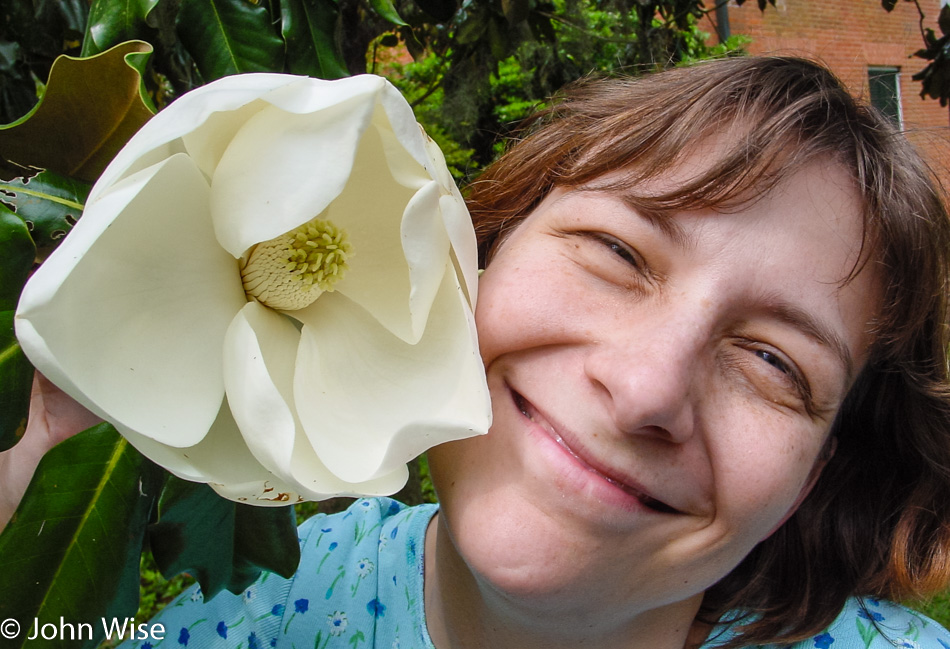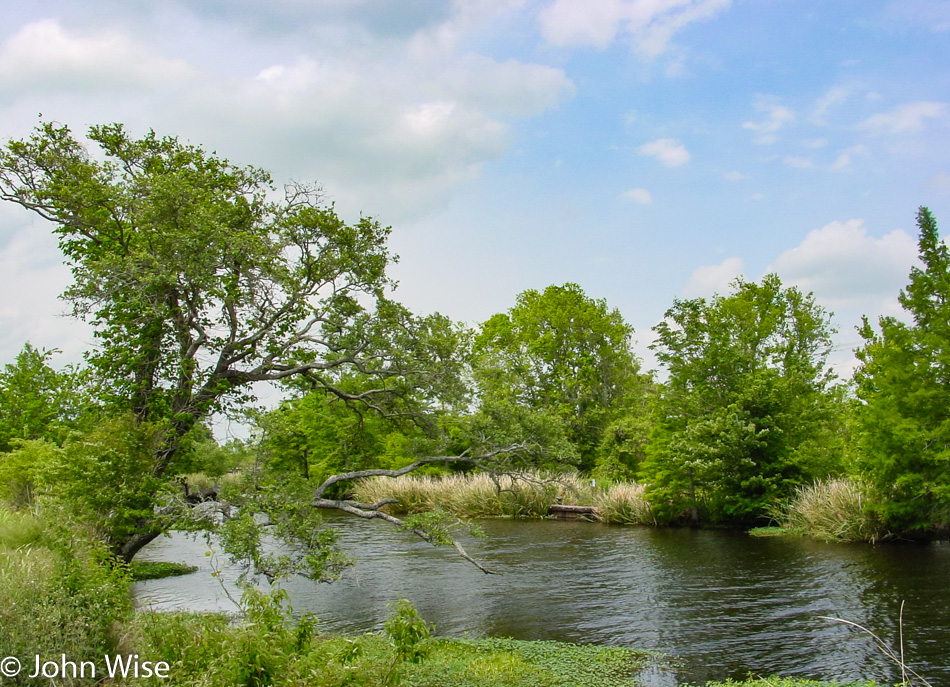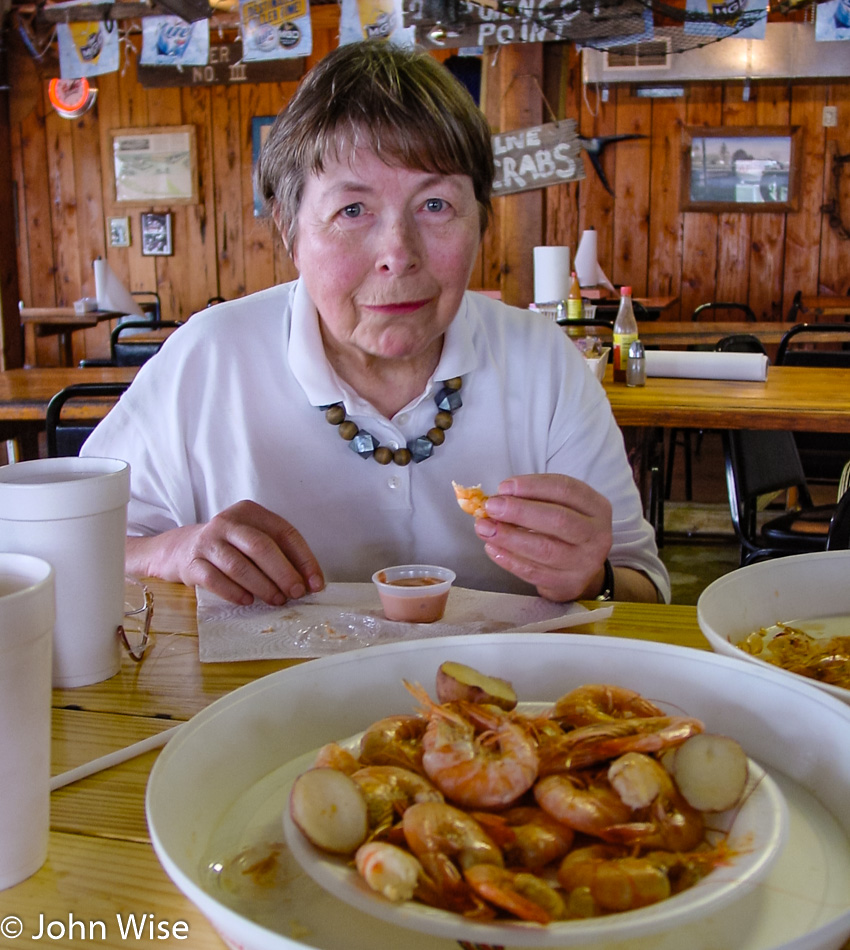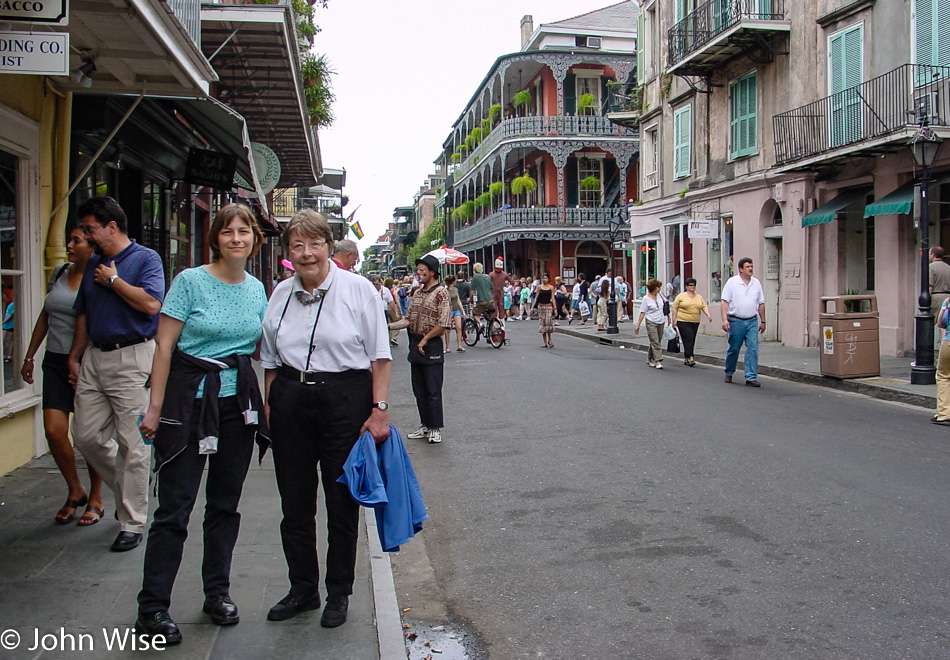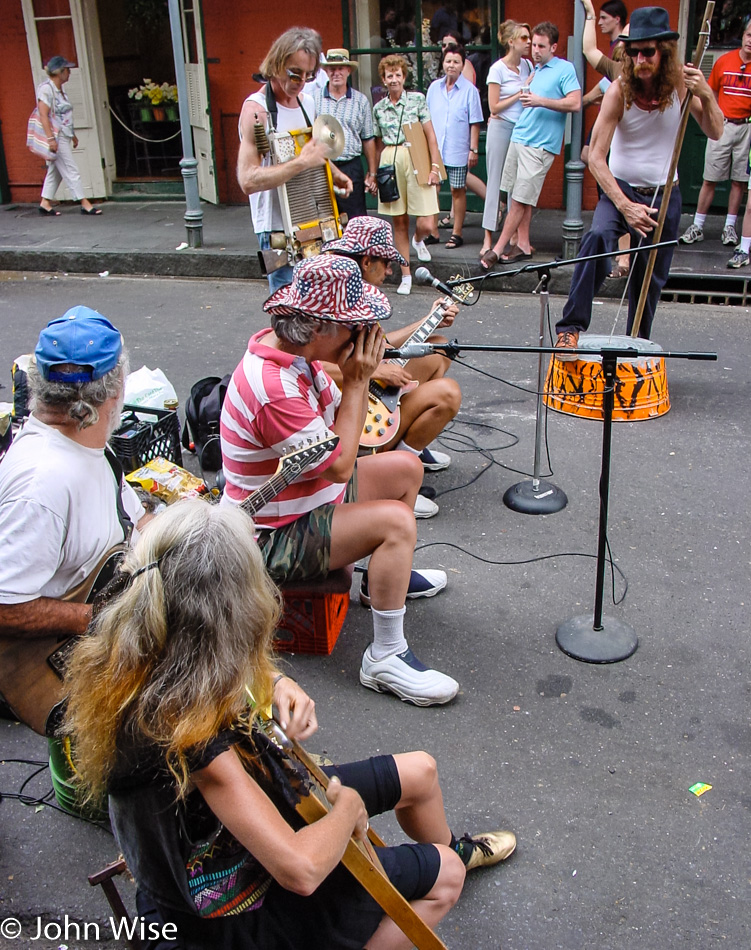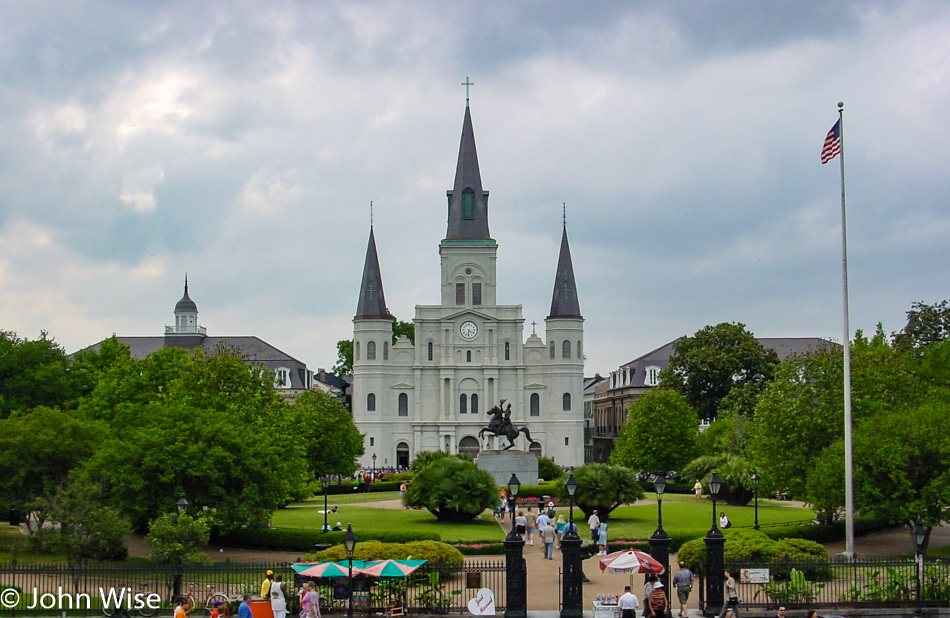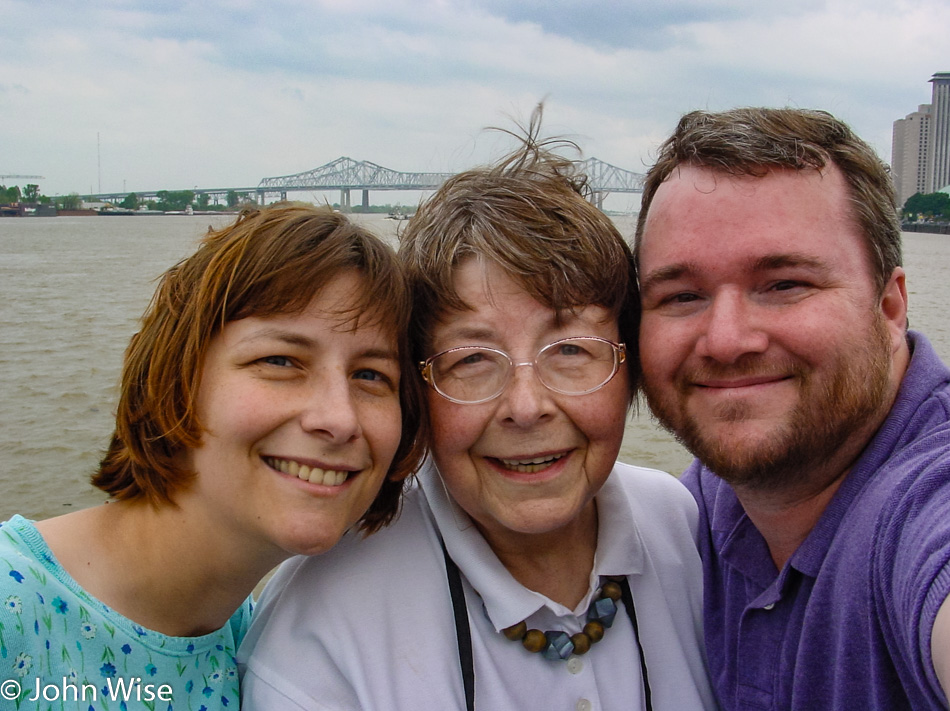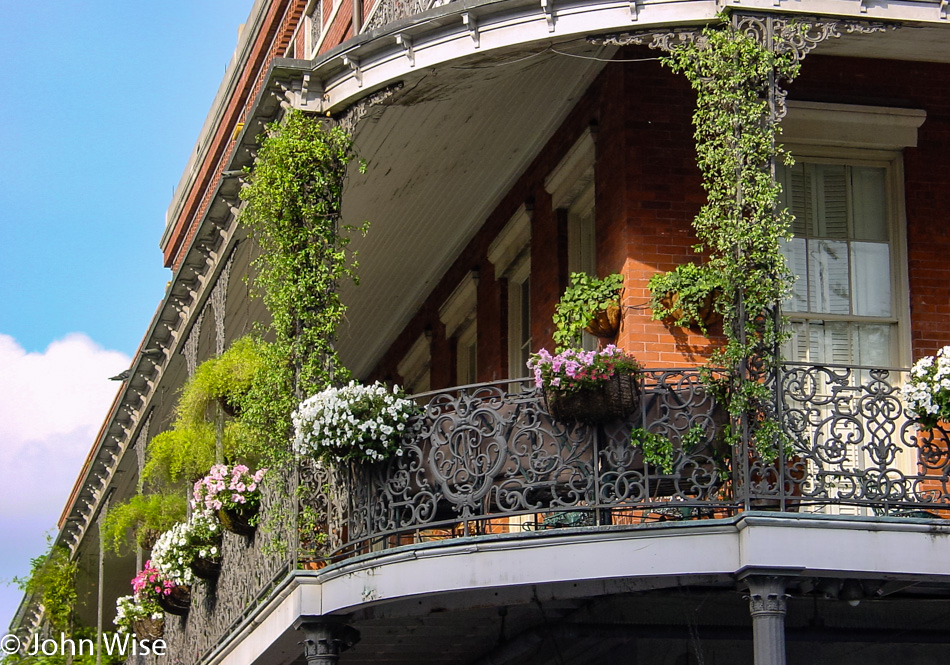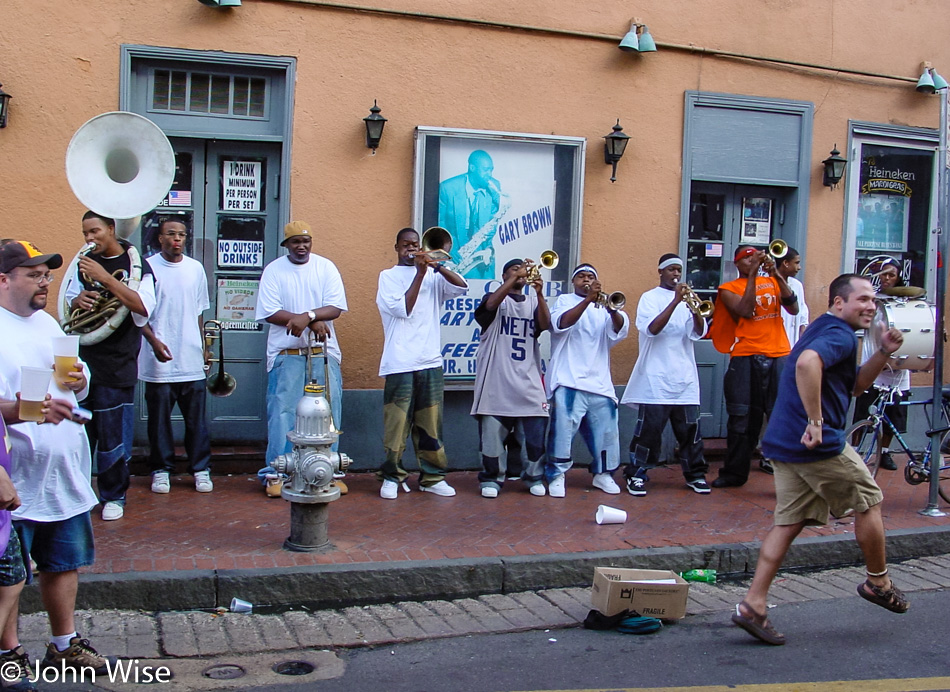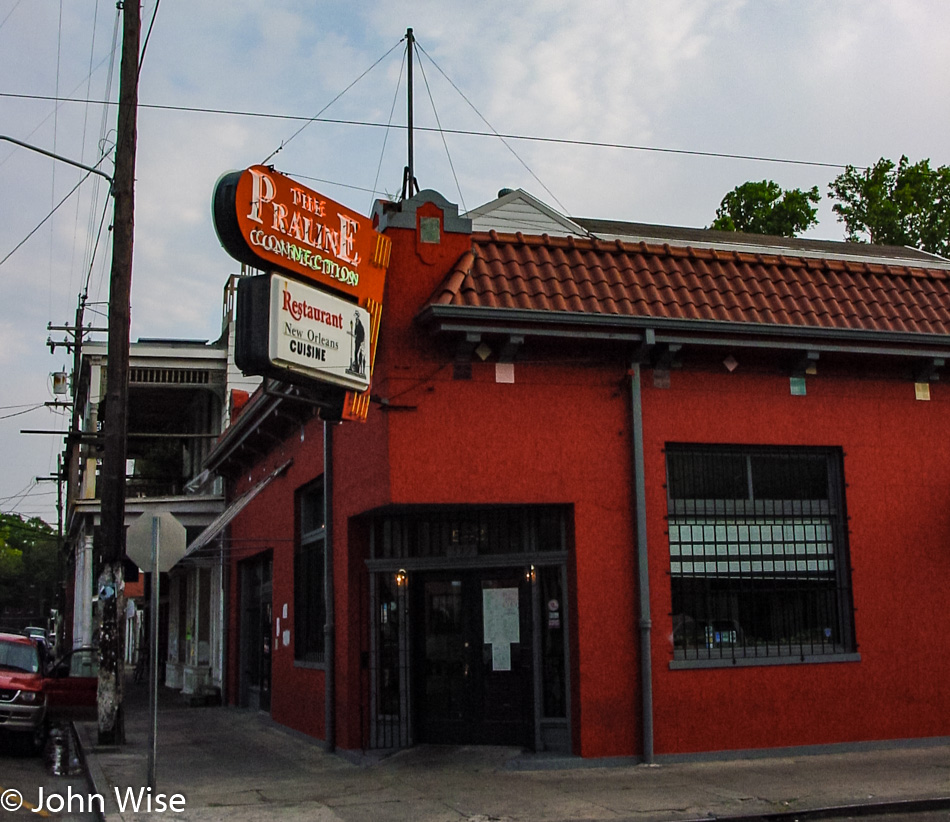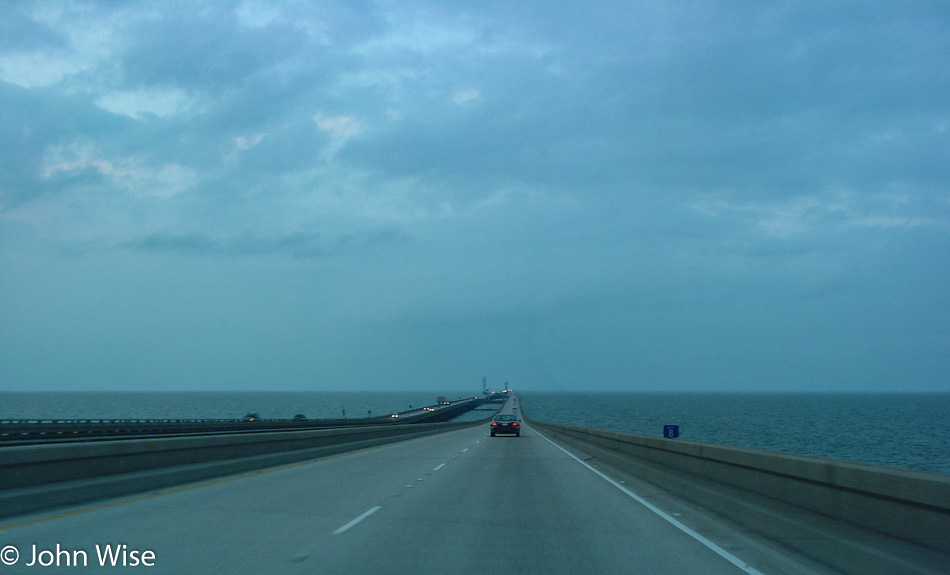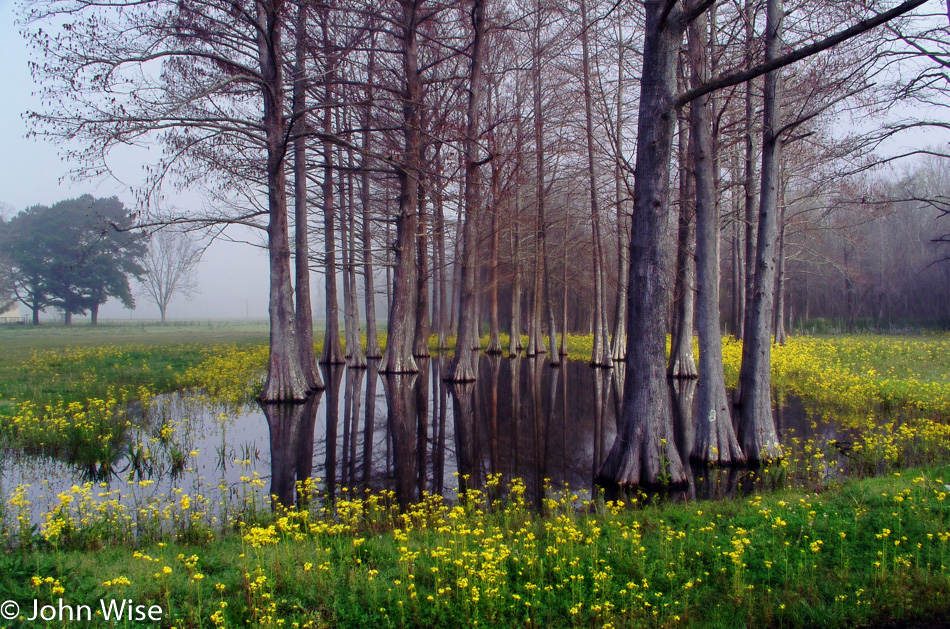
As is our routine, we have an early morning wake-up except that today the sky is blue, although we are surrounded by fog, heavy fog. North out of Lafayette to Opelousas and then right. Turning east on the 190 goes smoothly. After that, I blame poor signage in the American South for my morning repeat of the lost path, just as I’ve experienced the last couple of evenings.
The sign for Highway 105 is either too small to see or is non-existent. I have to drive for what seems like 10 miles before being able to make a U-turn and head back. There it is, a sign no bigger than a pack of matches where I turn right to drive north on the 105.
Driving next to the levy of the Atchafalaya River from Krotz Springs to Melville, we see more blue skies with only minor spots of fog. Oh no, not again, not another detour! Why couldn’t they print on the map that the ferry crossing the Atchafalaya runs between 5:00 and 8:00 a.m. and then again from 4:00 to 6:00 p.m.? Just why do we have to arrive when it’s not during those hours?
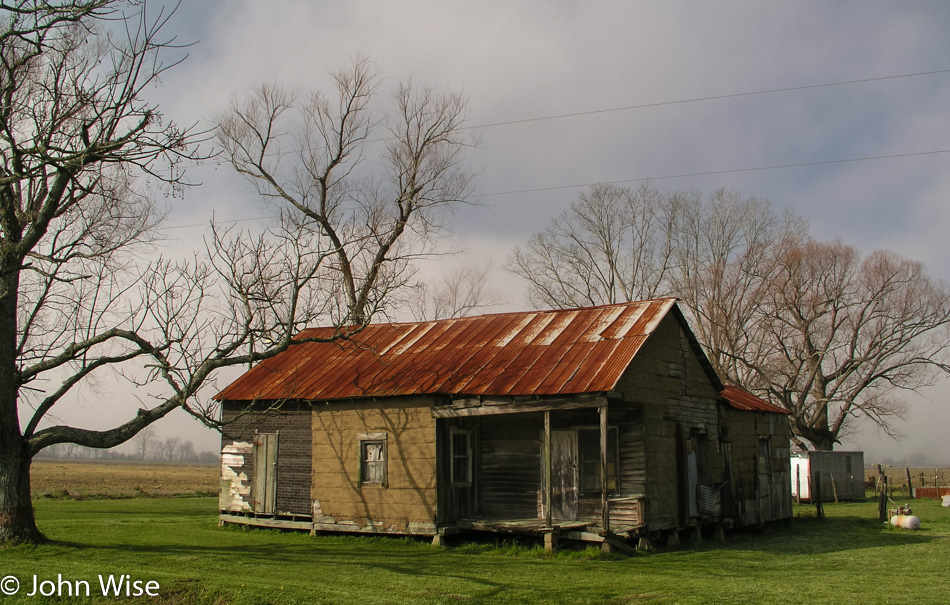
Should we go north or south? We could turn around and go back over the road we came on, or I choose the new road. I opt for new sights and drive the really long twisting detour north and then, in Simmesport, turn south to meet up with the road we should have been on.
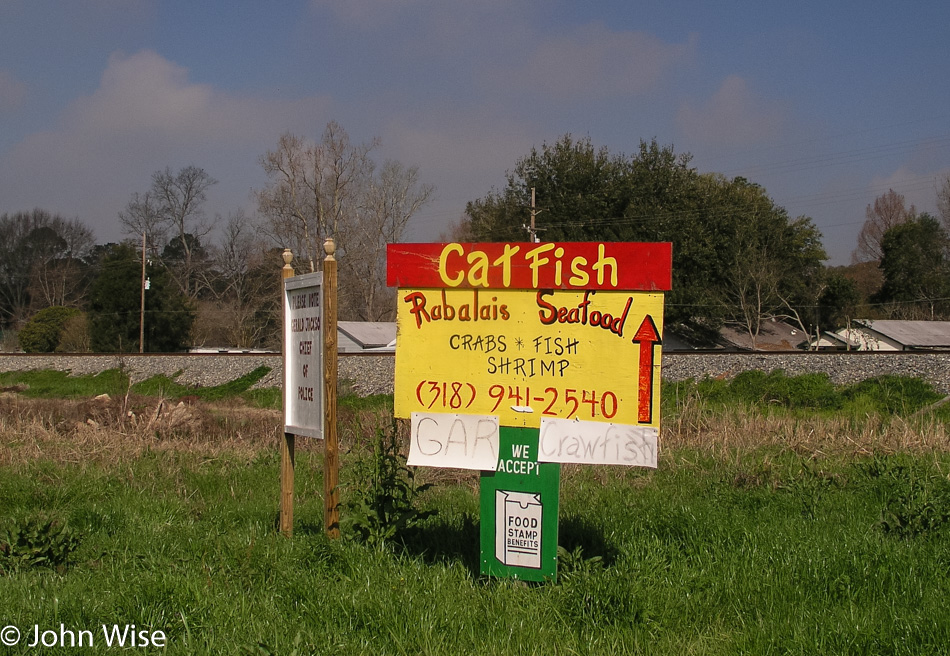
An hour and twenty minutes of detour later, we got to where we needed to be. On the way, we took a slow drive through Simmesport, which Auntie swooned over as being a replica of her beloved Angola outside of Buffalo, New York. The family used to own a vacation cottage there next to the lake. Only my mom was missing from the picture; Auntie dearly wanted Mom to see how uncannily similar the two towns were to each other.
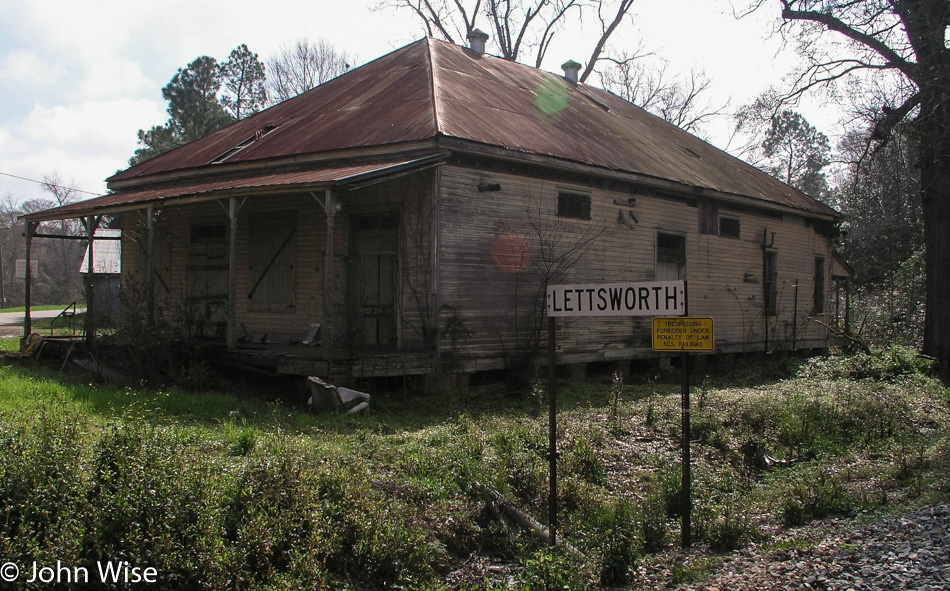
Ghost towns of the Southwest are not that different from ghost towns here in the South except for the mold and the way the plantlife devours things that people built. Wood is wet and rotting, concrete is now green, and rusty brown roofs fall into crumbling walls. The trash from people who have squatted in these broken homes litters the grounds with beer bottles, empty cans, and an occasional splash of graffiti scrawled on disintegrating interior walls. This is what was left of Lettsworth, Louisiana.
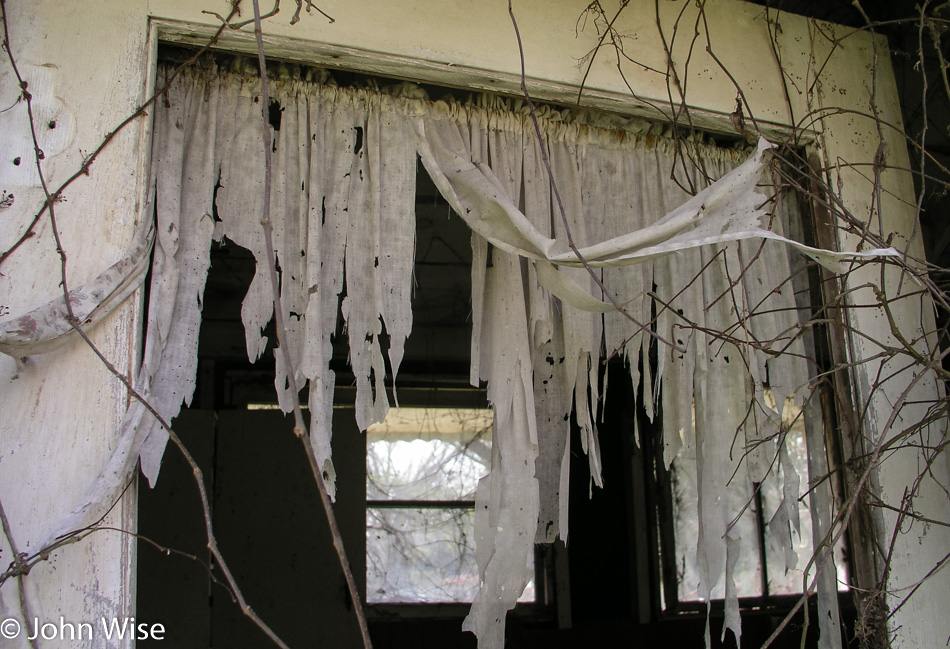
How long have these tattered curtains fluttered in the breeze as they seek disappearance? Whose hands sewed the once fresh, clean fabric that helped lend a sense of hominess to this dwelling that now lies empty? I try stopping at as many abandoned homes as time allows in my secret hopes of stumbling upon old memories forgotten and neglected along the road.
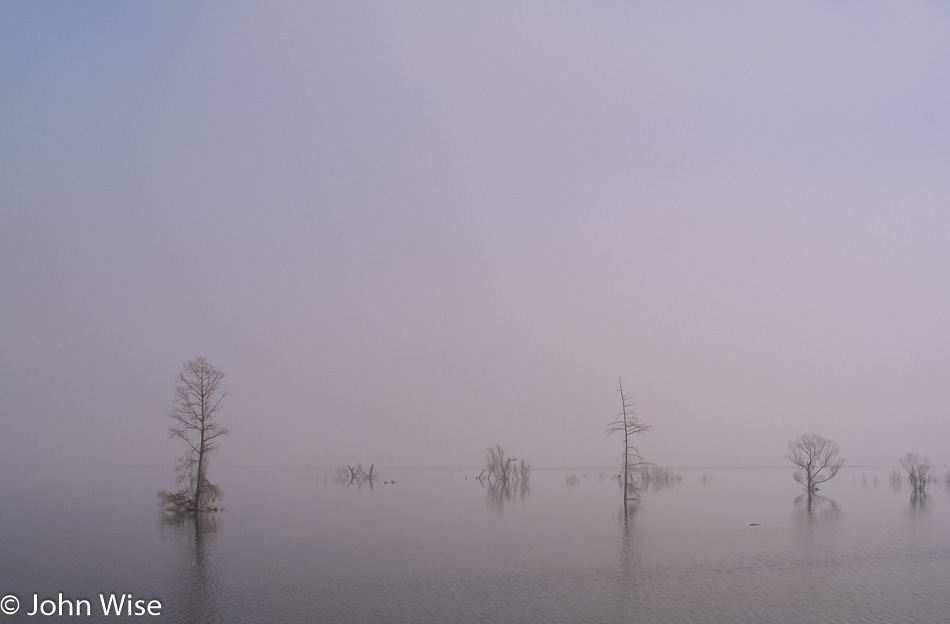
The town of New Roads is a nondescript, poor place on the way to the ferry taking us to St. Francisville. We are fourth in line, waiting to cross this river. The ferry is nearly visible out on the water, so we must have at least a few minutes out here. I get out to stretch my legs, scouting a location for a good photo.
It is a little too foggy again so I satisfy myself with a photo of some withered trees in the water.
Walking back to the car, the driver of a catfish delivery truck asks if I got a good photo. Not really, I tell him, though I’m unsure of exactly what I got. He says, too bad; I agree. I shared with him how amazing it was down at the water level seeing how fast the river was moving, to which he responded with: “Yep, that Mississippi gets a-moving.” Oh, I hadn’t realized that this was the Mississippi we were crossing. Well, that makes this ferry ride all the better, then.
After a few minutes, the ferry blows its horn on the opposite bank and is on its way back over here. Maybe 20 vehicles are driven on, a few more minutes pass, and we are on our way. Last year, Caroline walked across the headwaters of the Mississippi and then stood knee-deep a quarter-mile downstream; today, Auntie, Grandpa, and I cross this mighty muddy river not far from its terminus, where it spills into the Gulf of Mexico.
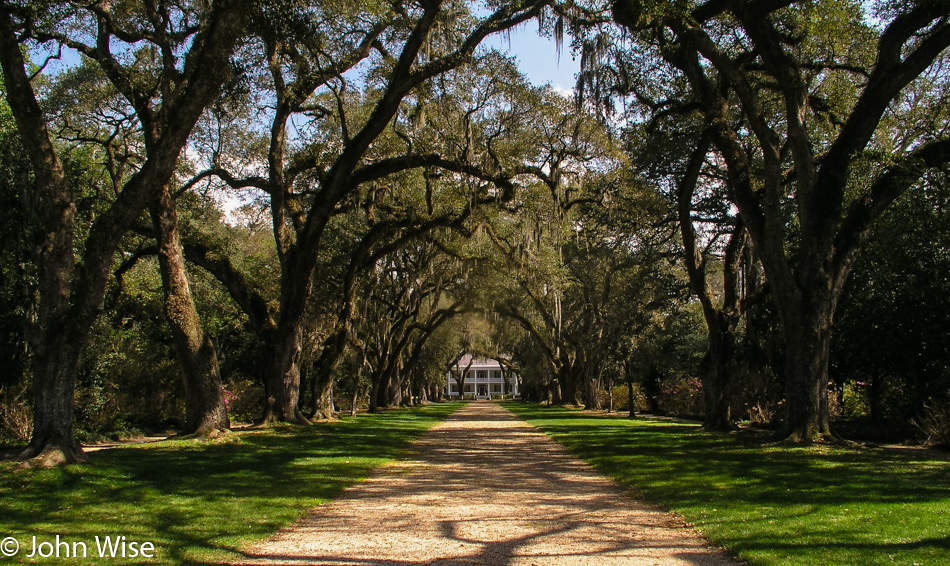
Into the lap of luxury is the contrast from the last town with St. Francisville here basking in the sun. This small town is a vacationer’s dream. Beautiful historic buildings with well-maintained homes, churches, and a vibrant business area all come together, working to scream at me to bring my wife back here at the first opportunity.
This is the Rosedown Plantation State Historic Site. Pressed for time due to our detours, we can’t visit the home or the gardens, and for the small entry fee, it doesn’t make sense for us to pay for a 10-minute view of the grounds. Surprise of surprises, the kindly lady at the front booth must have sensed this and allowed us to pass for free. She directed us to drive to the second driveway, where we would be able to sneak a peek at the plantation’s main home.
What a beautiful sight it was. The grounds are maintained with a focus on perfection. Flowers were in bloom, and the trees were freshly green. The original entryway to the home is a fenced-off tree-lined and -covered pathway with the house centered at the path’s end. Auntie and I fawn over its majesty while Grandpa, more in touch with his manliness, remains in quiet respect.
Now in need of a shortcut to make up for the lost time, I turn left on Louisiana 19 toward Mississippi in the hopes of getting on the 24/48 to the 98, which all looks bigger and faster than the winding roads I am currently navigating. That’s right; it happens again. I am about to detour us so we can lose even more time because this is becoming the primary means of getting to our destinations.
Outside of Wilson and just before Norwood, where we could have taken a right, we come upon two dozen cars stopped with a policeman ahead blocking traffic. Considering the traffic we have seen on these roads, this is a humongous traffic jam for this neighborhood.
Trying to be patient, we use the time for lunch. I make us each a sandwich from the food we packed just to be able to picnic along the road. Sandwiches made and nearly gone, some people have turned around and have given up on waiting. We do the same. We turn back on Louisiana 10 towards Clinton, but before we get there, it’s road construction time again.
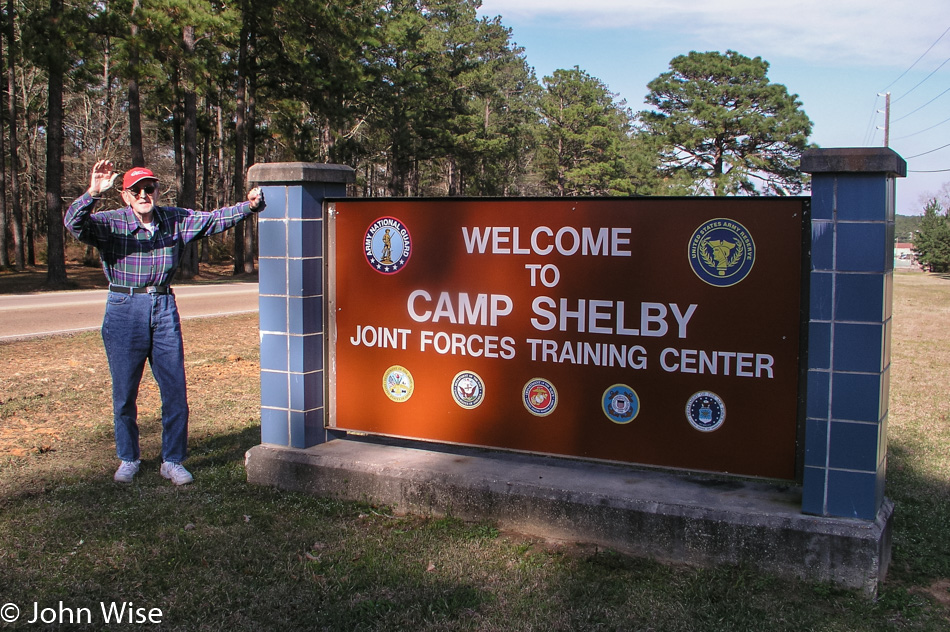
Not too bad, just a single narrow bumpy lane for a few miles, and then it’s on to Road 67 into Mississippi. Sadly, no neat “Welcome to Mississippi” sign is seen at this tiny crossing. The first town we come to is Liberty, how fitting as we are now free to make tracks at 65 miles per hour in a nearly straight line to Hattiesburg, Mississippi.
Just as we enter town, we turn right, following the 98 to the 49 South, where Camp Shelby is situated. As I was told on the phone prior to our visit, we are not supposed to enter through the north gate. Well, the sign said this way to the museum; maybe I misunderstood the lady speaking with a heavy Southern accent over the phone. I didn’t misunderstand: we were told to turn around and go down to the southern entrance.
Camp Shelby is where Grandpa did his basic training 63 years ago before shipping out for World War II. At the time, this camp in the forest was the world’s largest tent city. Grandpa was prepared to go fight the war and ultimately shipped off to New Guinea making his way to the Philippines before coming home.
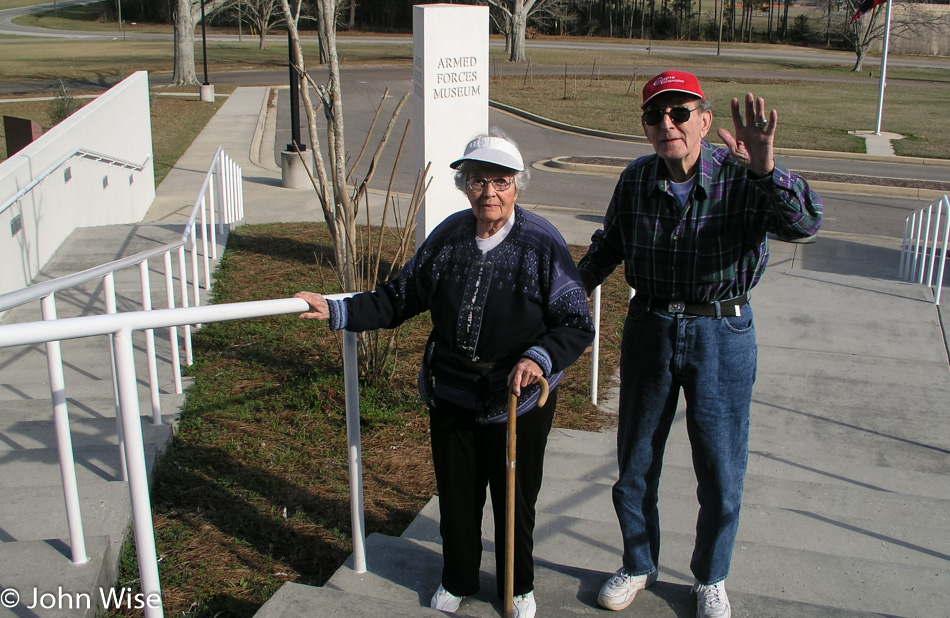
Grandpa was with the 155th Infantry Headquarters Company part of the DD (Dixie Division). He had originally come down for his first encounter with the South via a four-day train ride that delivered him here. Freshly married, my grandmother Hazel took leave of her job with Curtis Aircraft, where Grandpa also worked prior to his time in the Army, to join him until he shipped out.
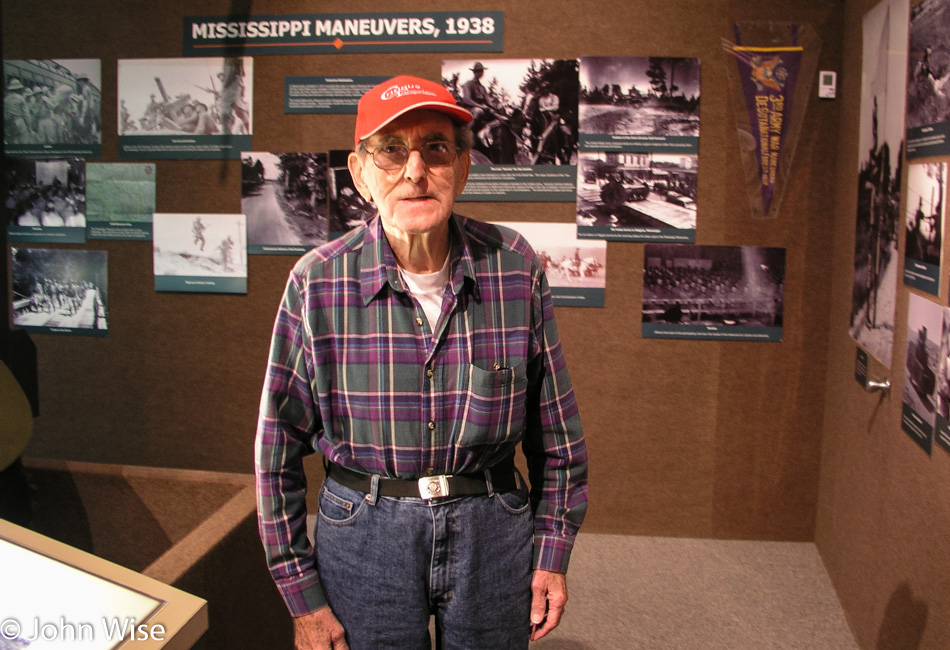
The museum here houses a wonderful display of artifacts, equipment, and their environment that the soldiers back in those days would have been using. Not only World War II is featured but also how the camp contributed to World War I and its function in training troops for Korea, Vietnam, Somalia, Desert Storm, and the current War on Terrorism.
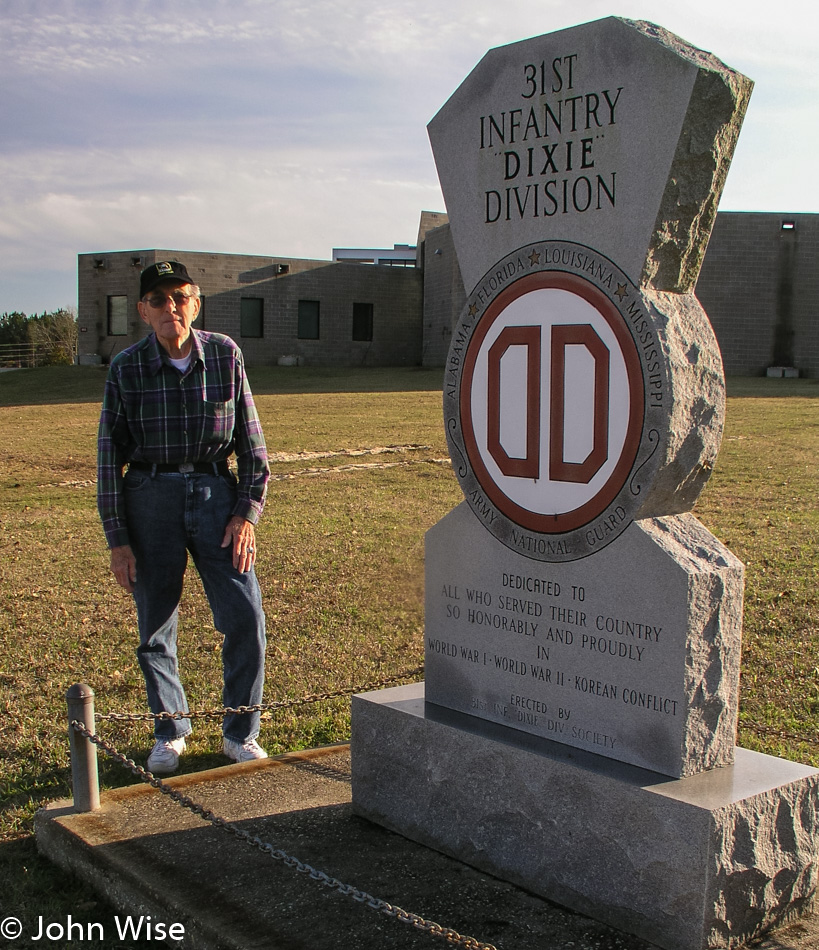
An Army baseball cap with Camp Shelby embroidered on it, along with a book about the history of this place was bought by Auntie and me to give to Grandpa as souvenirs from his trip back in time.
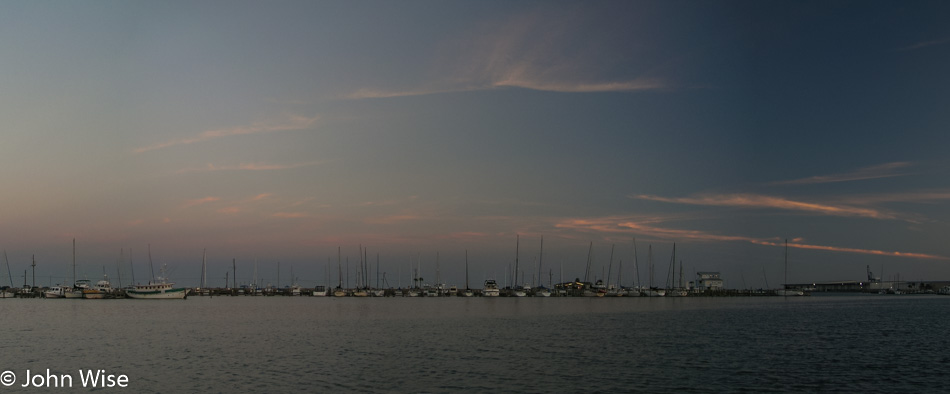
We need to make tracks, and without further ado, we are moving south again. Highway 90 brings us to dinner midway between Gulfport and Biloxi. Aunt Jenny’s “On the Beach” Catfish Restaurant serves up the same thing we had for dinner last night. We all love catfish, so a second time around is a natural fit. This all-you-can-eat catfish dinner might have been a bad idea because, after nine pieces, I’m feeling a bit weighed down.
We check into Days Inn after having missed the exit off the I-10, road construction, and an accident obscured the ramp so I HAVE TO DETOUR YET AGAIN!!! This tragedy is becoming a comedy of absurdity regarding how frequently it is happening to us. Why does this so rarely or maybe even never happen with Caroline as my navigator?
In the morning, we will pick up my daughter Jessica from the Corry Station Naval Training Area in Pensacola, Florida. I can’t wait for her to talk our heads off with her 195 miles per hour 140-decibel, indecipherable onslaught of mouth sounds she probably believes are words. Auntie will likely have to turn down the hearing aids while Grandpa ratchets down the pacemaker after being bombarded and adrenalized by my progeny.
One last item for the day is a big thanks going to Caroline “Onstar” Wise for the righteous restaurant, weather, and road help she is providing from her secret location in the Desert Southwest.
